Last updated on December 29, 2023
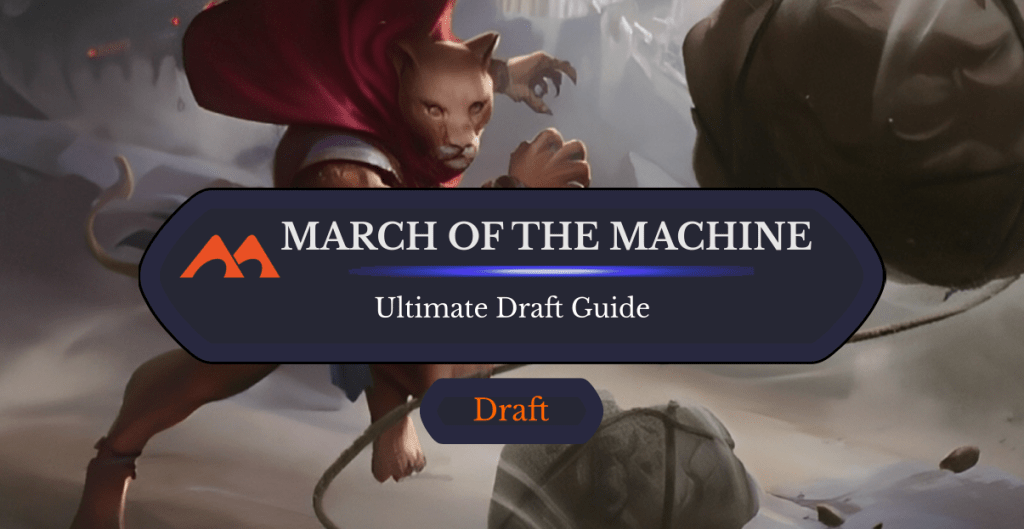
Bola Slinger | Illustration by Hendry Iwanaga
Greetings planeswalkers! We are now a week into March of the Machine Limited, and I think I’ve learned enough to give you a blueprint for the format overall. My initial article for Sealed/Day 0 gameplay got some things right, but plenty wrong too.
As it turns out, MOM is a complicated set that happens to have more text in it than any set printed to date. Expect a diverse, complicated format with lots of options and a couple of (nearly) unbeatable haymakers like Sunfall and Etali, Primal Conqueror.
Ready? Let’s get into it!
Format Big Picture

Alabaster Host Sanctifier | Illustration by Konstantin Porubov
MOM is a sluggish, value-heavy format that can be approached in a couple ways. Aggro/tempo, midrange/ramp, and control are all viable playstyles that have tailor made approaches.
Aggro/Tempo
Fast strategies in MOM will usually be base , , , , or . Most of these decks tend to lean on one of the set’s two aggressive mechanics (convoke/backup) or are tribal decks (/ knights).
You aren’t trying to go 20-0 in record time, but rather to build an overwhelming board before your slower opponents can get set up. Aggressive battles like Invasion of Kamigawa and Invasion of Xerex are at their best here.
Midrange/Ramp
Midrange/ramp strategies in MOM will often be base green, but beyond that can be any secondary color and will often splash one or several colors. This has been my most common and effective approach to drafting so far. Cards like Blighted Burgeoning, Overgrown Pest, Portent Tracker, and Invasion of Zendikar are essential for ramping out fatties and fixing mana. These decks are best understood as good stuff piles: play all your best threats/removal, and glue it all together with mana/card advantage.
How many battles these decks want heavily depends on both the quality of said battles and how many good ways your deck has to pop them. Busted cards like Invasion of New Phyrexia, Invasion of Fiora, and Invasion of Innistrad are obviously never getting cut.
On the other hand, this is the archetype where I have the least interest in mediocre battles since random mana/value creatures will struggle to flip them.
Control
Dimir () is the best color pair for building a control deck in MOM. This is typical for Limited formats and comes down to Dimir having the best interaction (Assimilate Essence and Deadly Derision), lots of options for card advantage (Halo Forger), and poor cards for being proactive. Dimir wants to trade 1-for-1 as much as possible and win with whatever happens to be left standing.
It also has some cards that excel in the uber grindy games it wants to play. Halo-Charged Skaab and Unseal the Necropolis form a soft loop that slowly whittles away both player’s decks. However, if you’re going to deck out first, you can use a combo like Halo-Charged Skaab and Ephara's Dispersal to keep milling your opponent and never deck out.
Anything Else?
Of the 10 2-color pairs, Rakdos () is the only one I haven’t mentioned yet. I’ll talk a bit more on it later as it can be built either aggro/midrange but also has unique sac synergies. Otherwise these skeletons seem to cover most of the decks I see.
It’s also worth noting that the line between midrange and control can feel a bit blurry sometimes, particularly if your deck is x.
Top Commons
I enjoy doing this section because I get to put my Day 0 predictions to the test. Which commons was I right about, and which ones were wrong? I’ll be rating top 4 new uncommons vs. my old picks and seeing how I did.
White
#4. Alabaster Host Intercessor
Alabaster Host Intercessor is a solid creature that doubles as a mana smoother/white source. I overrated this, though, since MOM has a lot of stronger expensive options.
#3. Cut Short
Cut Short is excellent for controlling decks since there are a lot of big powerful creatures in MOM. The tempo can be game-ending if the opponent is caught unaware by convoke, so try to play around it when you can.
#2. Angelic Intervention
Angelic Intervention is a premium trick that wins combats, stops kill spells, and sheds aura-based removal.
#1. Bola Slinger
Bola Slinger is an awesome aggro card. It’s mediocre otherwise but among the best commons for // decks.
The Verdict
I got 2/4 correct on my first try. Realmbreaker's Grasp isn’t bad but Cut Short has been a bit better, and Sunder the Gateway is more of a sideboard card. Actual Grizzly Bears is just not a card you really want to spend on a card on in a set this powerful.
Blue
#4. Assimilate Essence
Assimilate Essence is great cheap countermagic that plays well with incubate and snags most proactive plays. It even has a fail rider that makes this bad rather than dead late game.
#3. Eyes of Gitaxias
Eyes of Gitaxias is kind of like a bad Sarulf's Packmate, but paid for with / instead of /. Best with incubate or instant/sorcery synergies, though you’ll happily play it either way.
#2. Ephara’s Dispersal
Ephara's Dispersal is great rate when used defensively, but it’s the surveil 2 and battles that push this over the top. There are also good combat tricks like Angelic Intervention to blow out with this.
#1. Preening Champion
I called Preening Champion, but it’s even better than I thought. Incredible rate plus best convoke common, and it’s a knight for some reason. This is the best common in the set and basically as good as Jewel Thief and Inspiring Overseer.
The Verdict
I did better on blue, calling 3/4 of the cards. Stasis Field can sometimes be a good answer to bomb rares, but there’s a fair amount of counterplay to it (bounce, sacrifice, Ravenous Sailback, Scrollshift, etc.) Ephara's Dispersal won’t permanently answer anything but has still outperformed Stasis Field as blue’s go-to creature interaction.
Black
#4. Unseal the Necropolis
Unseal the Necropolis is strong 2-for-1 for grindy decks that’s best when either getting back bombs or grindy creatures like Nezumi Informant.
#3. Nezumi Informant
Nezumi Informant is cheap card advantage that has great synergy with cards like Final Flourish and Corrupted Conviction. What’s not to love?
#2. Final Flourish
Vicious Offering was awesome in Dominaria, so I probably shouldn’t have missed Final Flourish. I thought the set’s architecture was a bit sac unfriendly, but it has a ton of creatures that need killing plus Incubate tokens and random value creatures to sac.
#1. Deadly Derision
Deadly Derision is like Preening Champion in that some cards are just clearly better than others. Not surprised in the least that this is one of the best commons since its only real drawback is costing .
The Verdict
I called 2/4 of these cards, though neither Corrupted Conviction nor Traumatic Revelation have been terrible. But Corrupted Conviction is only premium in , and Traumatic Revelation has felt underpowered when it isn’t taking bombs. I’m still happy to play it, though, especially if you see any nonsense like Etali, Primal Conqueror that you can take.
Red
#4. Beamtown Beatstick
Beamtown Beatstick is a sleeper hit that has impressed me when it’s on the other side of the table, at least from good aggro decks. It makes blocking annoying while building up a mana advantage.
#3. Marauding Dreadship
Marauding Dreadship sits in a weird spot between a hyper aggro card and a value creature. Either way, it’s impressive whenever it isn’t running into Nezumi Informant.
#2. Ral’s Reinforcements
Convoke is obviously the name of the game here, but convoke has played out rather well. You can also use Ral's Reinforcements with sacrifice synergies too, giving it extra depth for decks.
#1. Volcanic Spite
Volcanic Spite is another no-nonsense card that was easy to call as #1. Great rate removal, filters for free, and it even hits battles for instant speed blowouts. Pick it, play it, and maybe splash it too!
The Verdict
I did poorly on red, only calling 1/4 of the cards. Wrenn's Resolve has underperformed since most deck’s in this format have too high of a curve to reliably draw two off of it. Furnace Host Charger has been okay but not spectacular, as red aggro decks don’t want to spin their tires cycling or play 6-drops. It’s also outclassed by other cyclers for green-based midrange decks. Finally, Shatter the Source is clunky but still very usable, and would’ve been #5 on this. But try not to play more than one copy unless you have a ton of Ral's Reinforcements’.
It’s also worth noting that current word of mouth has red pegged as the worst color in the set. You should probably be leaning on convoke with Ral's Reinforcements or using red as a support color if you don’t have some awesome rare red bomb.
Green
#4. Portent Tracker
Portent Tracker and the above two cards form an awesome baseline for bigger green decks, and my 3-0s often have one or two copies of each. It looks like a passable mana dork at first glance but is subtly good thanks to Blighted Burgeoning and it’s extra battle text.
#3. Blighted Burgeoning
As I said above, most green decks have high curves and lots of colors. Blighted Burgeoning is one of the best glue cards to hold such decks together because you get Gift of Paradise that draws you a Grizzly Bears. It’s similar to something like Weirding Wood, which looked great to me but didn’t have the right format for it.
#2. Cosmic Hunger
Cosmic Hunger is great removal on rate that has played out well. It also pops battles just like Volcanic Spite.
#1. Overgrown Pest
I’m probably slightly biased at putting Overgrown Pest as #1 since it’s definitely not Contagious Vorrac. Still, most of my green decks are fat, powerful, and always hungry for extra lands. It gets even better if you have powerful battles or double-faced rares to grab.
The Verdict
I went 3/4 on green and was only missing Blighted Burgeoning. Wildwood Escort has been decent, but there are enough good value options that it feels more replaceable than I expected.
Other
Skittering Surveyor and the 10 2-color dual lands are pretty nice cards for midrange decks. If there isn’t anything in a pack that grabs you, these are some of the safest picks to hedge for potential splashes later. But I wouldn’t take lands or Skittering Surveyor over most of the above cards.
Underperforming Commons
Certain cards in this set are just generally not worth playing. Let’s go over a few of those for each color.
White
I don’t mind Infected Defector in Sealed as much, but in Draft I hope you can do better than this. The format has so many great 5-drops for you to play instead.
Attentive Skywarden is mostly just Wind Drake, though I did get to play this with Corruption of Towashi once. It’s best in but not even great there.
The best go-wide decks tend to be which excludes a card like Inspired Charge. You can try it in and , but my decks haven’t felt wide enough for it to impress.
Blue
Furtive Analyst is a passable blocker/looter, but it can’t flip your battles and is mercilessly outclassed by Preening Champion in every deck.)
Not a terrible rate in theory, but getting Oculus Whelp to be active has been annoying in practice. Expedition Diviner was great, but it was easier to turn on and in a generally weaker format than MOM.
Haven’t liked main decking Negate, mostly sideboard it as a “break glass in case of Sunfall, Invasion of Fiora, or Breach the Multiverse.
Black
Tenured Oilcaster is a mediocre at best 4-drop that takes too long to become an actual threat. It’s not unplayable but definitely one of the format’s most common benchwarmers.
Mirrodin Avenged is good with Nezumi Informant and Invasion of Regantha, but a lot of decks struggle to set this up profitably. Play it only if you have a multitude of effective setups.
Failed Conversion is certainly not terrible, but you can hopefully do better than clunky 5-mana removal. Its best-case scenario is playing it alongside Heliod, the Radiant Dawn for a 2-for-1 setup.
Red
Tempted to just type “lol” and move on, but to explain why Burning Sun's Fury is bad, well… Basically it’s only good for random nut draw kills. You can’t use this as a combat trick and keep your creatures, and convoke doesn’t help it at all.
Trailblazing Historian is much better than Burning Sun's Fury, but still an objectively bad 2-drop thanks to a poor stat-line. Probably at its best with cards like War-Trained Slasher so it can at least help in winning battles quickly.
Nothing wrong with Coming In Hot in theory, but in practice it’s a small ball trick that is hard to find a slot for. Some formats are good for Kindled Fury, but this hasn’t been one of them for me.
Green
There’s a lot of decent removal in this set, so this random expensive aura is unlikely to do much. I only recommend playing Crystal Carapace if you have Heliod, the Radiant Dawn since cycling is a convenient way to get a 2-for-1 with Heliod.
Vengeant Earth looks flexible, but this is somehow bad at almost everything it does. It’s a bad combat trick, a weird ambush spell, and exceedingly finicky 3-mana removal… It gives Incubator tokens +4/+4, but that hasn’t been worth a card in practice.
Placid Rottentail is certainly not worth a card on its own, and you’re unlikely to have enough sac/discard synergy to run it for graveyard value. Best avoided in favor of real cards or just an 18th land!
Other
Halo Hopper isn’t really worth a card. Try to leverage convoke with Temporal Cleansing, Meeting of Minds, and Thunderhead Squadron instead which don’t feel like mulligans.
Urn of Godfire is emergency removal/bad fixing. It’s not unplayable but tends to be a band-aid card rather than anything desirable.
Flywheel Racer is fine in low curve decks that need to splash, but I’d only play one copy and would never prioritize it.
Top Uncommons
Here I’ll give you some of the best uncommons in the format for you to P1P1, splash, and say “how is this still in the pack!?”
#10. Elvish Vatkeeper
3/3 for three plus incubate 2 is a great rate for . The extra incubate synergy/mana dump has been useful, but I’ve been most impressed with Elvish Vatkeeper for its raw stats rather than as a build around.
#9. Imoti, Celebrant of Bounty
Imoti, Celebrant of Bounty is an excellent value card that commonly gets splashed. It’s worth noting that this plays very well with common “basic landcycling” creatures, which can help you get more 6-drops into your deck without ruining your curve.
#8. Artistic Refusal
Artistic Refusal is one of the scarier convoke cards out there, and something I find myself hoping my opponents don’t have sometimes. It’s a brutal 2-for-1 that can crush ramp decks if you’re able to get under them. Watch your opponent’s creatures carefully and try to bait this out if you can!
#7. Collective Nightmare
for -3/-3 is decent, but it’s of course convoke that makes Collective Nightmare premium. Another card that you might want to play around if your opponent seems to be acting suspiciously.
#6. Skyclave Aerialist
Skyclave Aerialist is another premium 2-for-1 that’s similar to Captive Weird. It’s a bit less efficient but has a solid base mode before you flip it.
#5. Norn’s Inquisitor
Norn's Inquisitor is an awesome 2-drop that’s good on its own and even better with incubate and +1/+1 counter synergy. Best in /, but will always get played.
#4. Halo Forger
I was shocked to learn Halo Forager says “a graveyard” and not “your graveyard,” which makes it far more likely to hit something good. Best played alongside spells like Deadly Derision and Unseal the Necropolis, and also often worth splashing.
#3. Marshal of Zhalfir
Marshal of Zhalfir is incredible rate for a lord that also happens to be a tapper for some reason. knights doesn’t have many other payoffs, but wow is this card good.
#2. Captive Weird
Captive Weird is easy 2-for-1 that goes in every deck and doesn’t require you to be to play by any means. Note that it says “until the end of your next turn,” which is why it’s so good.
#1. Invasion of Amonkhet / Lazotep Convert
Invasion of Amonkhet is completely bonkers, and is one of the easiest 3-for-1s I’ve ever seen. The 6-card self-mill means you should have a good target for the flip even with 0 setup. Splash it every time you can!
Underperforming Uncommons
Most uncommons in this set are decent or better, but there are some cards that just haven’t performed very well. All of these happen to be Multiverse Legends from sets that natively had more synergy with them than MOM does.
Being colorful isn’t too hard in this set, but the colorful decks don’t want a random Hill Giant like Radha, Coalition Warlord. Value is the name of the game, and Radha has none. The lack of force tap effects like Relic of Legends also hurts it, so please don’t bother.
Kitesail is neat with Yargle, Glutton of Urborg, but otherwise it’s going to trade down with 3-drops and not do much. Yargle and Multani has cut this card’s meme value in half too.
Dina, Soul Steeper was a great card in Strixhaven, but this set lacks Pests and lifegain cards. Probably best in Jund () decks as an extra sac outlet for Furnace Reins, I guess?
Kwende, Pride of Femeref’s base stats are bad for , and Swordsworn Cavalier is the only common it excels alongside.
Zada, Hedron Grinder is potentially powerful, but there’s little other support in the set for building around combat tricks. Best results should be in or alongside Angelic Intervention and Zhalfirin Shapecraft.
Archetypes
Like most sets, MOM has 10 2-color archetypes. There are two signposts for each (one creature and one battle). These are some of the easiest ways to figure out what’s open in Draft, though be warned that splashing is common.
Most of the archetypes feel fairly soft, so while you’ll have some core themes to optimize for, expect individually strong cards to often trump synergy in this format.
Azorius Knights (Aggro/Tempo)
Azorius () knights is an aggressive(ish) deck with a soft knights tribal element. I say “soft” because there really aren’t many payoffs for focusing on knights. There’s only:
- Marshal of Zhalfir
- Invasion of New Phyrexia / Teferi Akosa of Zhalfir
- Zhalfirin Lancer
- Protocol Knight
- Swordsworn Cavalier
This is a pretty minimal theme, so I’ve found that my Azorius decks are often closer to good stuff piles than I’ve envisioned. The knight synergies are good if you have them though, and good knights like Preening Champion are easy to pick up. Cards like Quintorious, Loremaster and Invasion of Tolvada make for great splashes that can be worth the trouble.
Azorius is decently convoke friendly too, especially if you’re lucky enough to have two or more Preening Champions. Expect to generally play 17 lands.
Dimir Graveyard (Control)
This is the grindiest deck in the format that tends to lean on removal spells and card advantage. A good Dimir () deck wants:
- Removal like Deadly Derision, Final Flourish, Merciless Repurposing, Assimilate Essence, etc.
- Card advantage from Halo Forager, Unseal the Necropolis, Nezumi Informant, and Invasion of Vryn.
- Cheap blockers like Aetherblade Agent, Nezumi Informant, and Preening Champion to slow down opposing battles and free up removal for what actually matters.
- One to three cards like Consuming Aetherborn to give you a bit of lifegain for stabilizing against aggro.
As for splashing you can certainly do so in Dimir, but you’ll need to land on lands plus Skittering Surveyor to actually pull it off. I’ve been more likely to splash for Halo Forger than to splash as Dimir so far. Expect to play 17 or 18 lands.
Rakdos Sacrifice (Aggro/Midrange)
This has been one of my favorite archetypes so far, though it shines best when you can table Furnace Reins (which is an uncommon to begin with). The plan is of course what Rakdos () often does in Limited: play cheap creatures, sacrifice them for value, and use Furnace Reins plus sacrifice when you can too.
A good Rakdos build wants a mix of:
- Cheap value fodder like Ichor Drinker, Nezumi Informant, and Ral's Reinforcements.
- Cards that leverage fodder like Corrupted Conviction, Mirrodin Avenged, Stormclaw Rager, and Compleated Huntmaster.
- Premium removal like Deadly Derision and Final Flourish, which are even better than it normally is here.
- Bombs, which every deck wants!
Expect to play 16 or 17 lands most of the time. Trimming that 17th land is a good idea if you have Skittering Surveyor or lots of cheap card draw.
Gruul Battles (Midrange)
Gruul () is your friend if you want to get as much experience with the new card type as possible. Its specialty can best be seen through Rampaging Geoderm and Invasion of Ergamon. Invasion of Ergamon is particularly interesting since it works as a tutor for battles and is also frankly kind of bad on its own.
To build a good Gruul deck you should have:
- 3+ battles, ideally rare/mythic ones that you can tutor up with Invasion of Ergamon after you pop it.
- Splashing will often be desirable, both for bombs and just to pad your battle count so that your synergies come together.
- Creatures like Rampaging Geoderm, War Historian, and Thrashing Frontliner that excel at flipping battles.
- Premium removal like Volcanic Spite and Cosmic Hunger that kill threats and give you extra play with battles.
Flipping battles is a means to an end (victory), so don’t forget that you’ll need to attack your opponent too! You should usually be flipping battles first and foremost, unless your opponent is at a low enough life total (10-) that detours do not seem worth it.
Expect to play 17 lands in most builds.
Selesnya Counters (Aggro)
Selesnya () has been an inconsistent deck to play against. Sometimes my opponent sticks an early Botanical Brawler and just murders me. Other games, though, it’s just a simple aggro deck that can easily be grinded out.
So if you want success with Selesnya, you’ll want a balance of:
- Cheap creatures, especially Botanical Brawler, and backup creatures (Bola Slinger is a favorite).
- +1/+1 counter payoffs like Invasion of Moag and Dusk Legion Duelist.
- Angelic Intervention should be good for two or three copies and is a card you should definitely play around against Selesnya when you can.
Depending on how aggressive and synergistic your Selesnya deck is you may or may not find splashing productive. It’s fully possible to build a midrange deck of sorts, where green is the base color and white is leaned on for removal like Seal from Existence and Cut Short. Those decks will just be normal, rampy green piles with lots of splashes and won’t play up Selesnya’s +1/+1 counter synergy.
Expect to play 16 or 17 lands in aggressive Selesnya decks.
Orzhov Phyrexians (Aggro/Midrange)
Orzhov () Phyrexians have been one of my least favorite decks to play since there aren’t many payoffs for it. The ones that exist are:
- Sculpted Perfection
- Invasion of New Capenna (for Holy Frazzle-Cannon)
- Phyrexian Censor
- Bloated Processor
- Grafted Butcher
- Incubate payoffs like Phyrexian Awakening and Gift of Compleation
Of these, Invasion of New Capenna is by far the best. It often plays out like a midrange deck thanks to Orzhov’s light theming and can lean on usual black synergies like Nezumi Informant and sacrifice.
Expect to play 16 to 18 lands depending on your deck’s curve and gameplan.
Izzet Convoke (Aggro/Tempo)
Izzet () probably has the highest ceiling of all of the 2-color archetypes. If you have a good Izzet convoke deck, you can 3-0 Drafts without needing anything other than commons/uncommons.
The key here is to have a mix of:
- Lots of convoke enablers (Ral's Reinforcements and Preening Champion) and/or rarer cards like Joyful Stormsculptor and Invasion of Segovia.
- A good mix of convoke cards to leverage your small creatures. Most are decent, just avoid trash like Burning Sun's Fury!
- Premium convoke payoffs like Stoke the Flames and Zephyr Singer are ideal but hardly needed.
- Bombs, removal, or just generally good cards to round out your deck.
Payoffs are way easier to get than good convoke cards. If you have to give up a Temporal Cleansing to pick up a second Ral's Reinforcements, do so. I rarely splash in Izzet convoke, though I might if my deck was slower or less focused on gaining tempo through convoke.
Expect to play 15 or 16 lands in most Izzet decks since reliance on convoke can justify trimming mana a bit.
Golgari Incubate (Midrange)
Golgari () has been a great archetype for me, and one of the better color pairs to center my good stuff piles in. This is largely based on the strength of Deadly Derision and green’s ramp trio I mentioned earlier.
A good Golgari deck thus will often have:
- Powerful multicolor cards, both in-color and splashed.
- Premium removal like Deadly Derision and Final Flourish.
- Ramp trio and other ways to fix mana for extra removal/bombs.
- One to three copies of cyclers like Alabaster Host Intercessor, Timberland Ancient, and Gloomfang Mauler.
It can also be worthwhile to build around incubate, or just to incorporate a little shell of incubate synergy into your 3- or 4-color good stuff pile. This usually just means having four or five cards of higher rarity that play off incubate like Elvish Vatkeeper, Corruption of Towashi, Glissa, Herald of Predation, and Teysa Karlov (to give your fat tokens lifelink). It helps that cards like Blighted Burgeoning and Merciless Repurposing give you more Incubator tokens to play with too.
Expect to play 16 to 18 lands in most Golgari decks, but they’re mana intensive to play 18, I often play 16 since I can rely on Portent Tracker, Overgrown Pest, and the like to count as extra mana sources. A deck with 16 lands and 6 ramp cards has “22 lands,” in a sense.
Boros Backup (Aggro)
Any regular reader of mine can probably feel my lack of enthusiasm for Boros () as a color pair. As always, Boros is an aggressive deck that wants to turn things sideways.
Its signpost uncommons are a mixed bag. Invasion of Kylem is frankly not great, while Mirror-Shield Hoplite is narrow but very powerful. The most promising Boros deck is an aggressive deck with two or three Mirror-Shield Hoplites and as many backup creatures as it can get. If you can’t get the backup theme going, then dudes and pump spells will have to suffice.
Boros midrange is usually not going to be a thing in this set, or if it is for you then it’s likely just based on a specific assortment of rares. Even then you might just find yourself playing Naya () or something instead. It’s hard to resist the allure of green in good stuff piles.
You might also be able to build Boros equipment if your lucky stars line up since no one else will want Sram, Senior Edificer or Valduk, Keeper of the Flame. Kor Halberd, Beamtown Beatstick, and Kitesail are perfectly solid pieces of equipment for you to play.
Expect to play 16 or 17 lands in most Boros decks, and try to end games before your small creatures get outclassed!
Simic Transformers (Midrange/Tempo)
The last deck is another archetype with a soft, underwhelming theme. Mutagen Connoisseur has high potential, but it’s often a 0/5 or 1/5 for most of your games in practice. You can pump it by doing one of three things:
- Creating and flipping Incubator tokens
- Winning battles
- Flipping your DFC creatures like Aetherblade Agent and Blightreaper Thallid
This runs into a couple issues:
- Fielding and flipping Incubator tokens is the most practical, but can be slow.
- Mutagen Connoisseur itself can’t win you any battles since it’ll be stuck in Angelic Wall mode.
- DFC creature flips are generally quite expensive and might also cost two extra life to save costs.
I’ve found that the transformer aspect of this deck isn’t worth optimizing for. By all means play your good double-faced cards and Overgrown Pest, but focus on being a rampy good stuff over synergy. In practice this means that Golgari and Simic () play remarkably similarly and will often splash the best cards from each other.
Expect to play 16 to 18 lands like other green-based decks, going lower on lands when you have enough ramp creatures and cyclers for it.
Drafting the Set
As you might have noticed above, this is not an amazingly synergistic set. You shouldn’t ignore the 2-color themes for optimizing your deck, but the highest good in MOM is to take broken cards. That means you’ll want Sunfall, Breach the Multiverse, Etali, Primal Conqueror, Chrome Host Seedshark, Boon-Bringer Valkyrie, and the like, and as many of these kinds of cards as possible.
My default approach to drafting MOM is to draft green good stuff. Not necessarily 5-color good stuff, but green-base with a secondary color and then one or two splashes depending on what I’m lucky enough to get passed. It’s more than possible to splash double pips rares in this set as long as you have the right kind of fixing.Portent Tracker and Invasion of Zendikar can let you get away with things like splashing Kogla and Yidaro in Golgari, which might not be possible in other sets.
If you have a pick order handy, I’d recommend referring to it early on as you learn the format. I’m surprised by how close my picks often feel, so your mana and existing cards will oftentimes serve as your tie breaker for difficult picks.
Because there are so many powerful creatures, good removal is very important!Every deck wants it, though it’s definitely least important in proactive strategies like Izzet convoke and Boros aggro.
The best way to draft a deck that isn’t a good stuff pile is to build an aggro deck or Dimir control. Dimir control usually starts with a powerful blue or black rare (or premium uncommon), and then you find that green-based midrange isn’t open and don’t want to bother with the ramp trio. Aggro for me is usually going to come from getting late signposts and struggling to find my footing in a green-based pile seat.
Gameplay Tips
Building good mana bases is essential for success with green-based piles. You often want at least eight green sources minimum to ensure a roughly 90% chance to cast Overgrown Pest or Blighted Burgeoning on turn 3. Once you hit your green minimum, what you often do next is play one of each required basic, with the rest in your secondary color. If you’re just more mixed, balancing basics after hitting a green minimum has worked best for me.
This is a set with a lot of tricks you can play around. The most important ones to remember are the convoke instants, which can blow you out by letting a “tapped out” opponent surprise you in combat. Try to remember these cards exist, especially if the game is tight and your opponent seems to not be doing much:
- Aerial Boost
- Artistic Refusal
- Collective Nightmare
- Cut Short
- Pile On
- Shatter the Source
- Stoke the Flames
- Wicked Slumber
Angelic Intervention is the single most important trick without convoke to be aware of. It’s a good reason to consider main phasing removal spells when you can, at least against white decks.
Knowing when to flip your battles and when to just go face is important. Defaulting to flipping battles is a safe bet, with “10 life” as a rough cutoff for realizing face is the place. One thing you generally don’t want to do is start a battle and then realize it’s not worth finishing.
On the other hand, the “sunk cost fallacy” is real, so don’t miss lethal because you want to flip a long-contest battle!
There’s a lot of room for gaining an edge through sideboarding in this format. Things you can do with sideboarding include:
- Boarding in clunky removal like Urn of Godfire to answer slow must kill threats that you otherwise can’t beat.
- Siding in sweepers like Glistening Deluge to handle convoke decks or bombs like Invasion of New Phyrexia.
- Negate for a variety of busted noncreature rares that otherwise can be difficult to stop.
- Siding in enchantment/artifact hate like Atraxa's Fall and Ravenous Sailback to punish Stasis Field or powerful enchantments like Corruption of Towashi.
- Trimming creatures that have superfluous sizing and don’t matter against your opponent. I might find myself cutting Marauding Dreadship against too many X/1s, for instance.
- Mixing up your configuration of combat tricks to mess with your opponent and subvert their expectations. Sometimes all it takes to win games is one surprise Arachnoid Adaptation.
- Cutting or adding battles based on how easily you think you can (or can’t) flip them versus your opponent.
- There are certain cards that excel against control decks that I’d rarely main deck, like Realmbreaker, the Invasion Tree.
One other thing about sideboarding is that you can splash for the kind of changes above. If you’re a 3-color Jund good stuff deck and lose game 1 to Sunfall, you might be able to use your Skittering Surveyor, Blighted Burgeoning, and an Island to surprise your opponent with Negate.
Trophy Examples
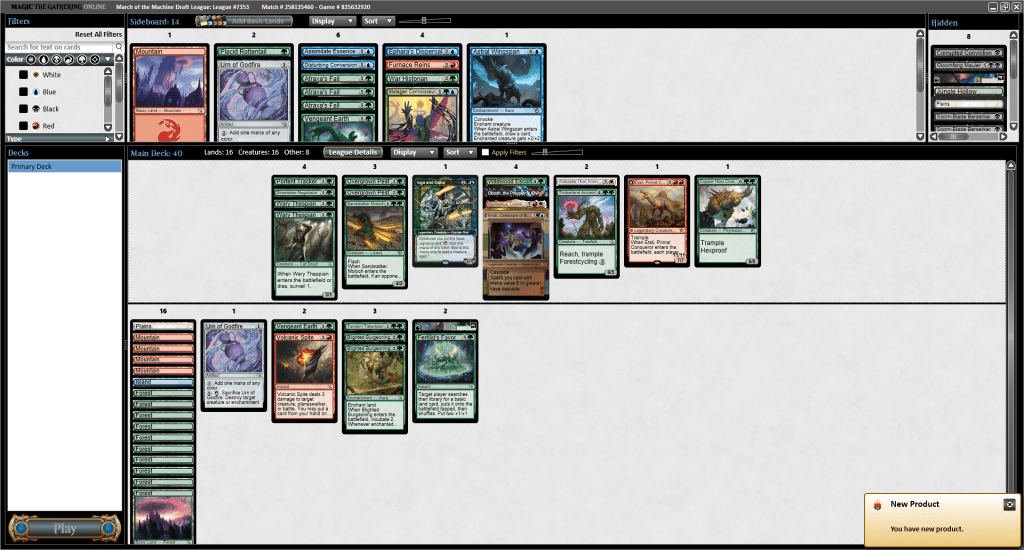

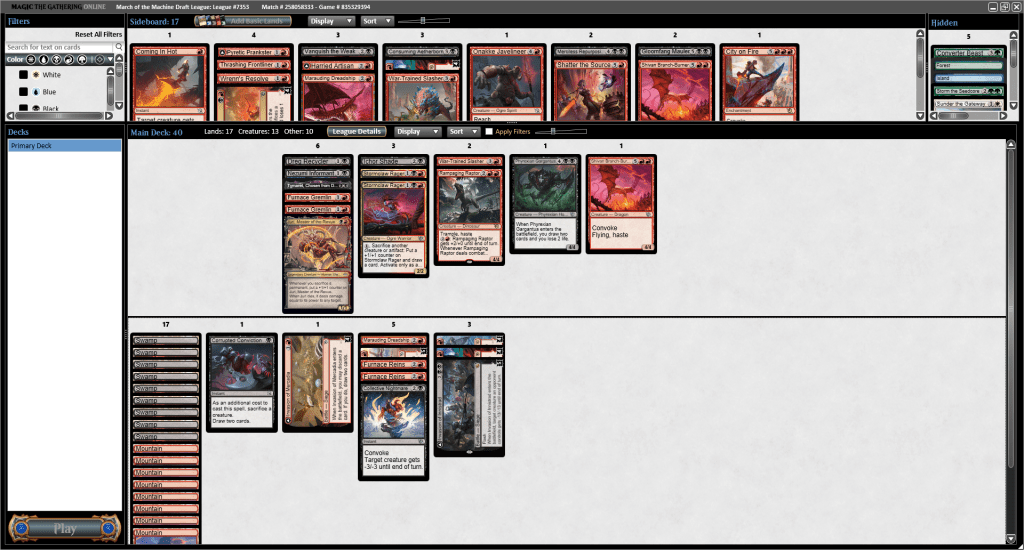

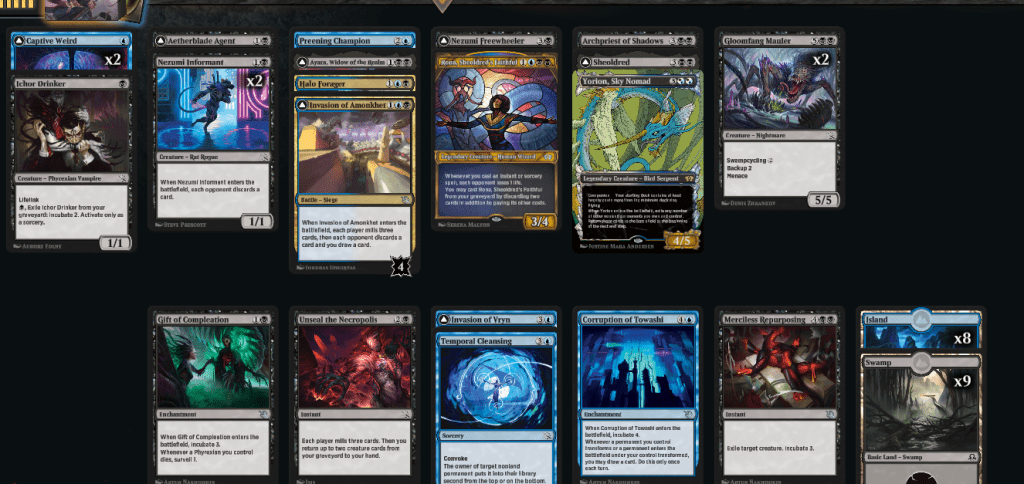
Wrap Up

Furtive Analyst | Illustration by Marcela Bolivar
And with that, another Draft guide comes to a close. MOM has been a really fun set for me so far, and I’m excited to be going to Minneapolis soon for some in-person Sealed PTQs! You might even see me there if you’re going, so feel free to say hi if this guide (or anything else I’ve written was helpful).
Have you had any luck with this format? What do you think the top common is? Have you managed to get red to work for you? Let me know in the comments below, or join the discussion over in the official Draftsim Discord.
Until next time, may your opponent not have that Sunfall you’ve been worrying about!
Follow Draftsim for awesome articles and set updates:


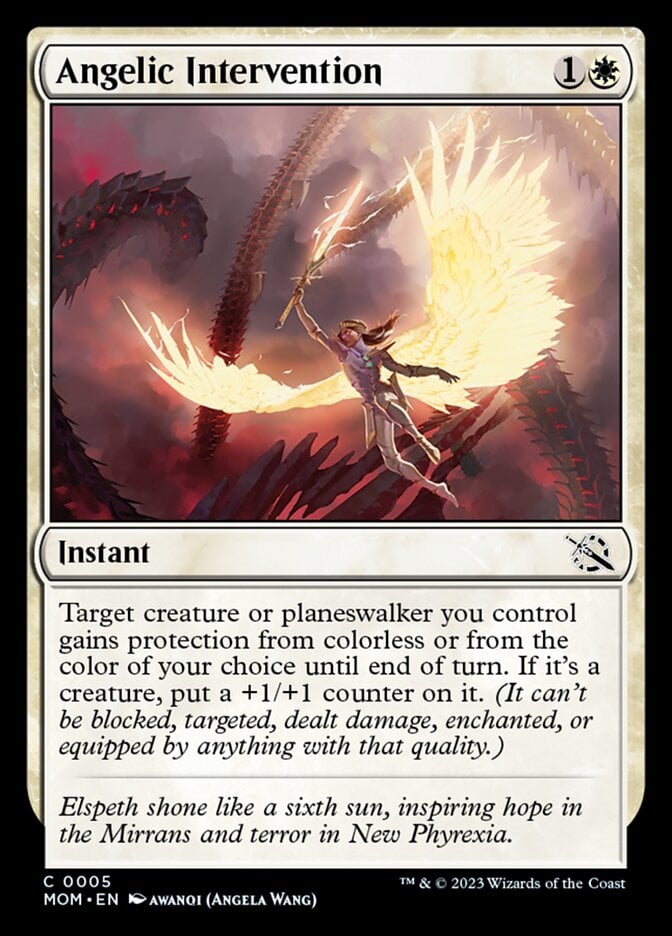
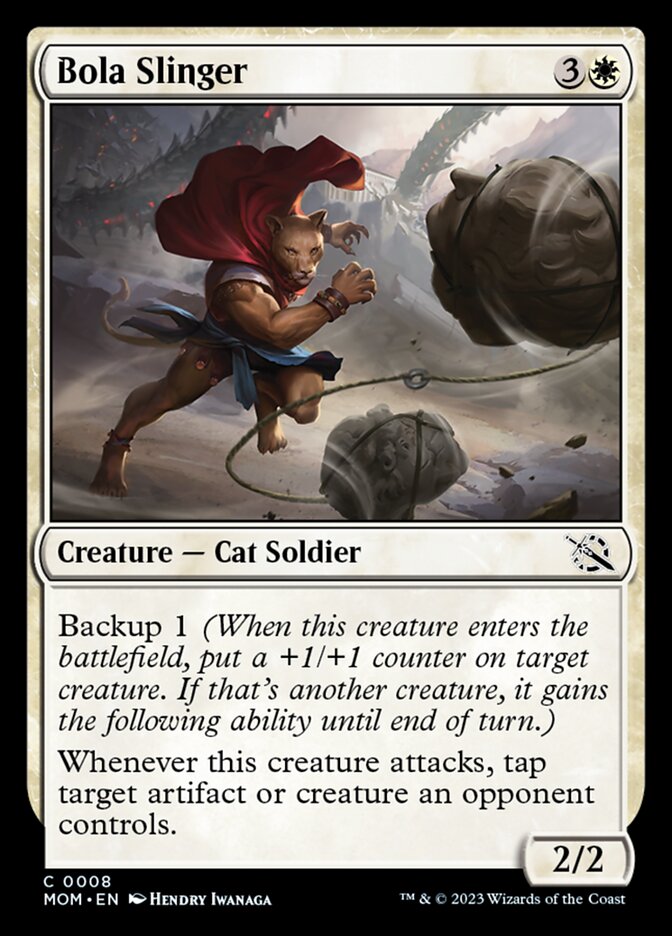
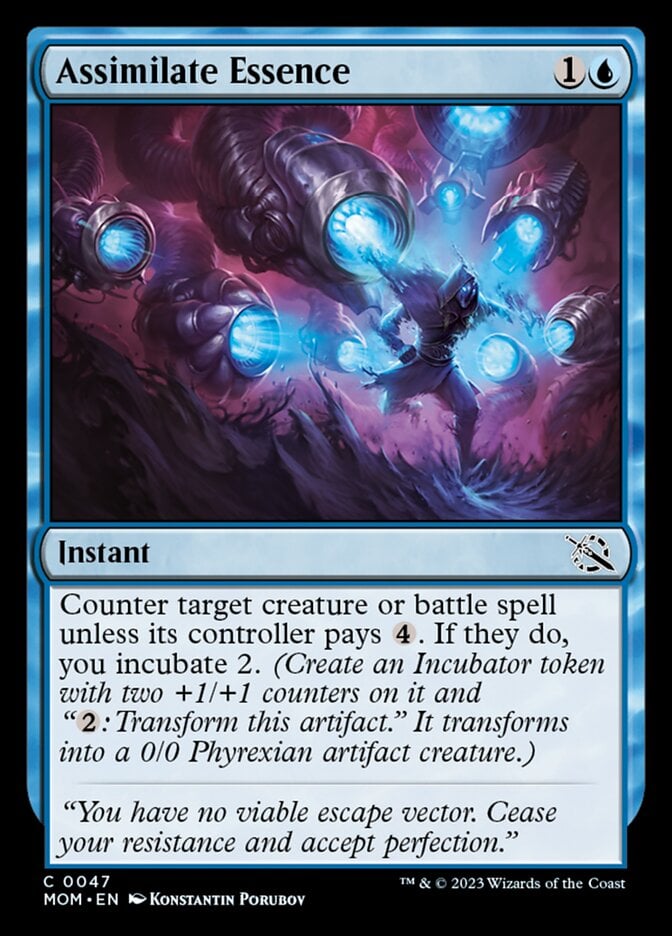


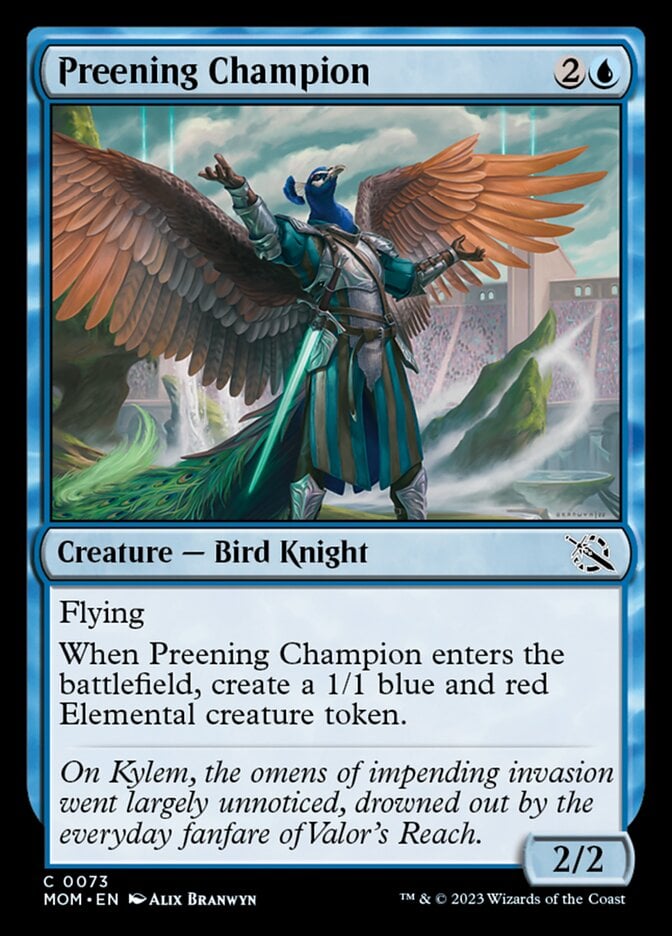
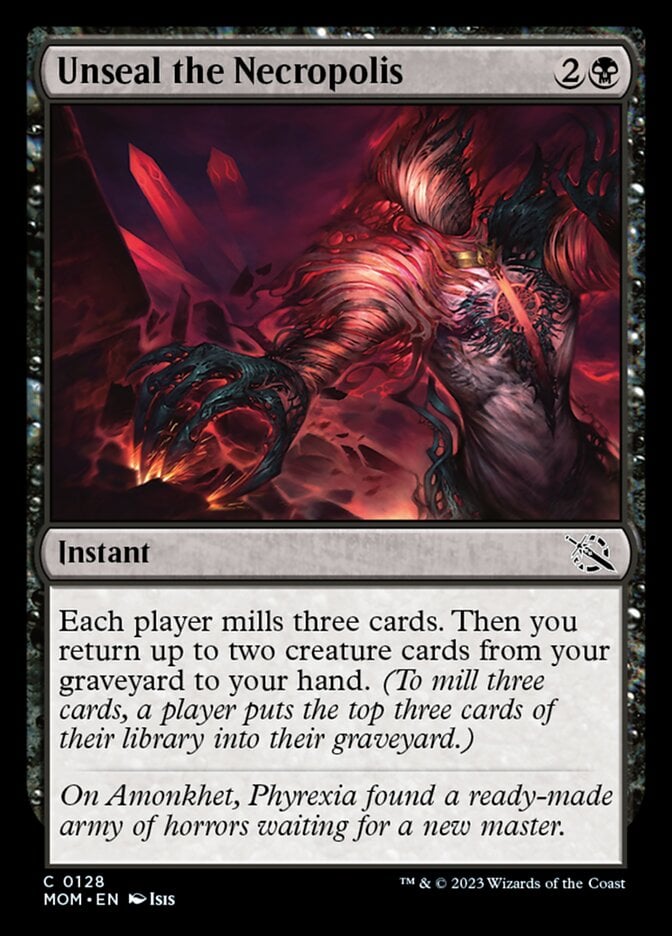

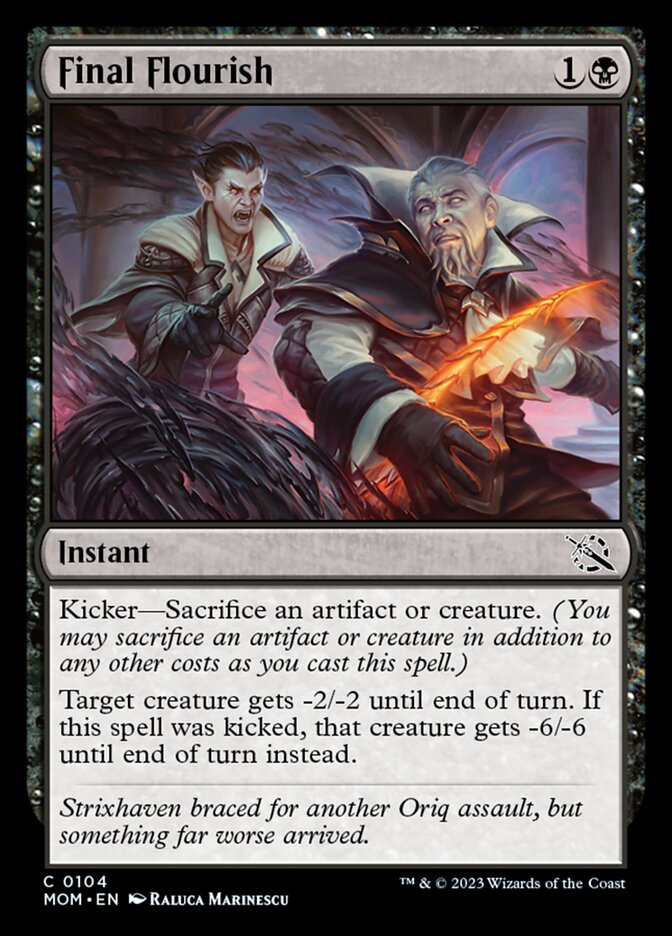
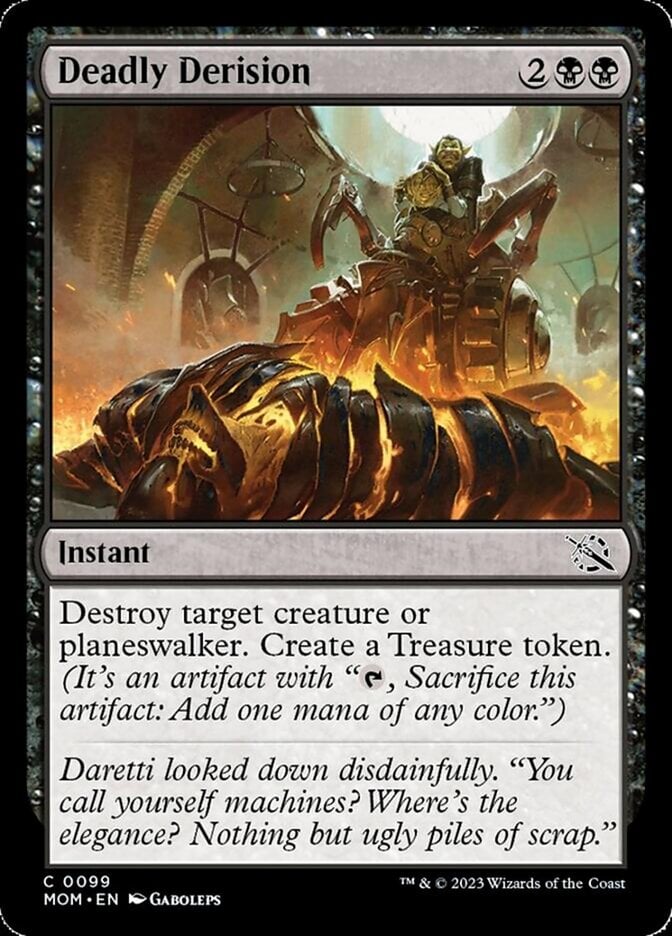
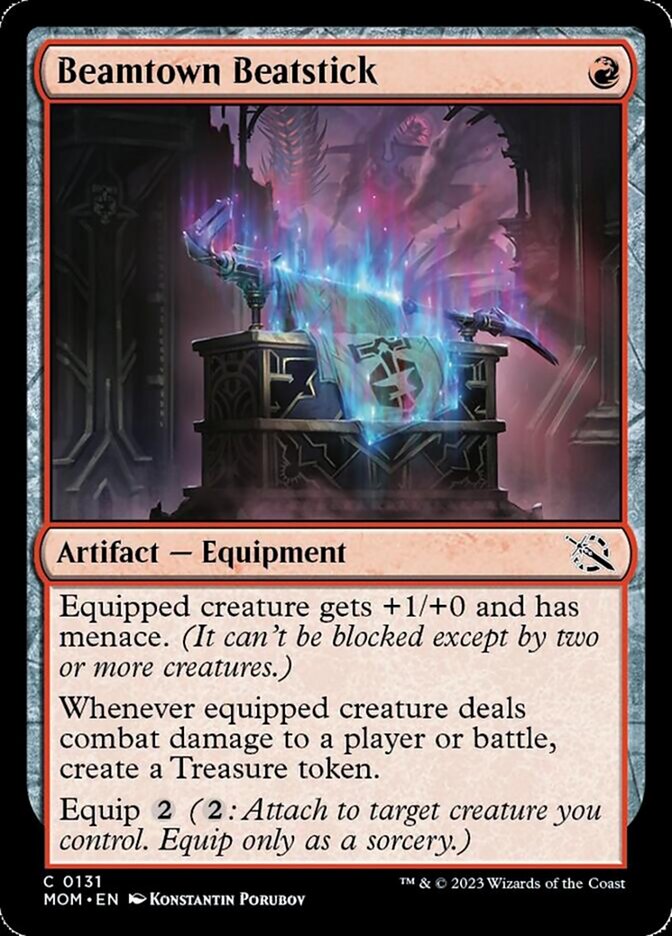
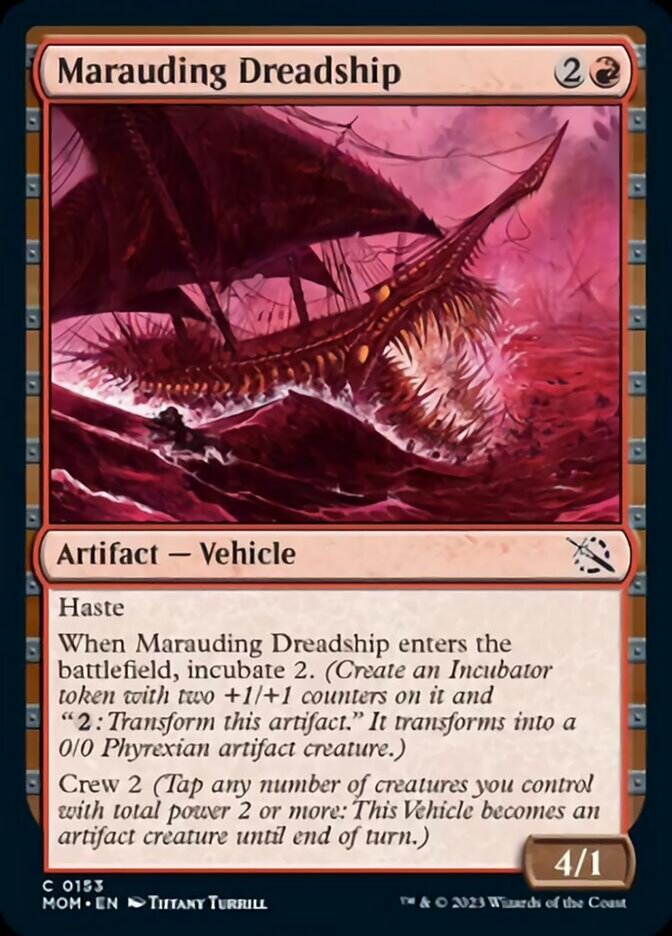
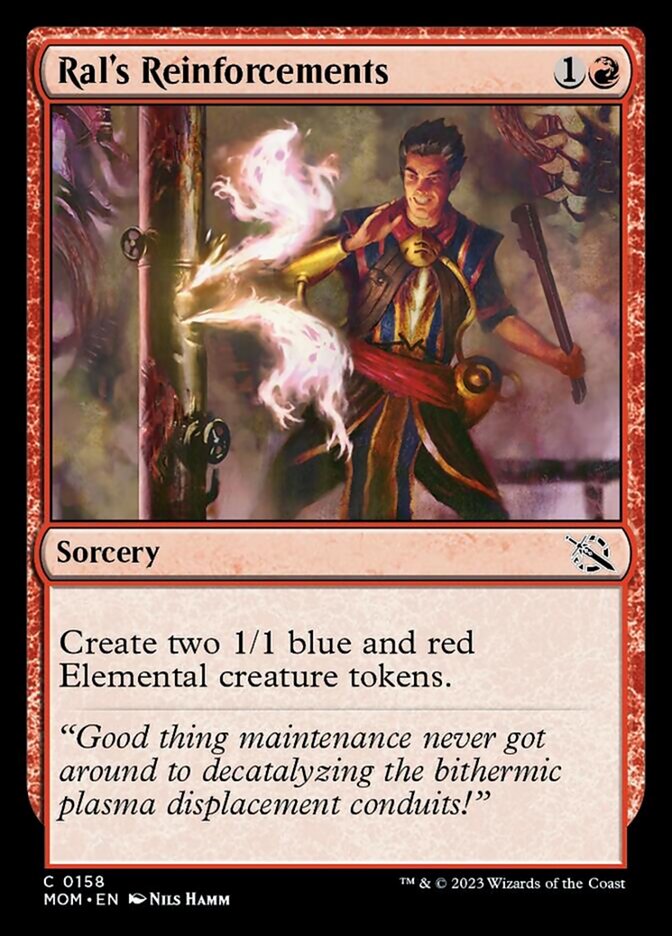
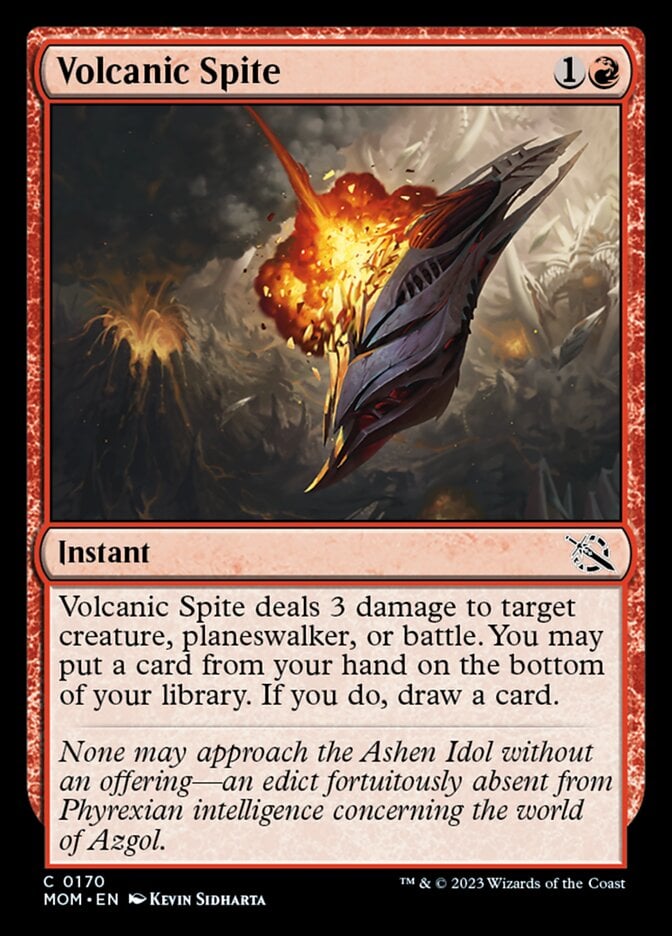
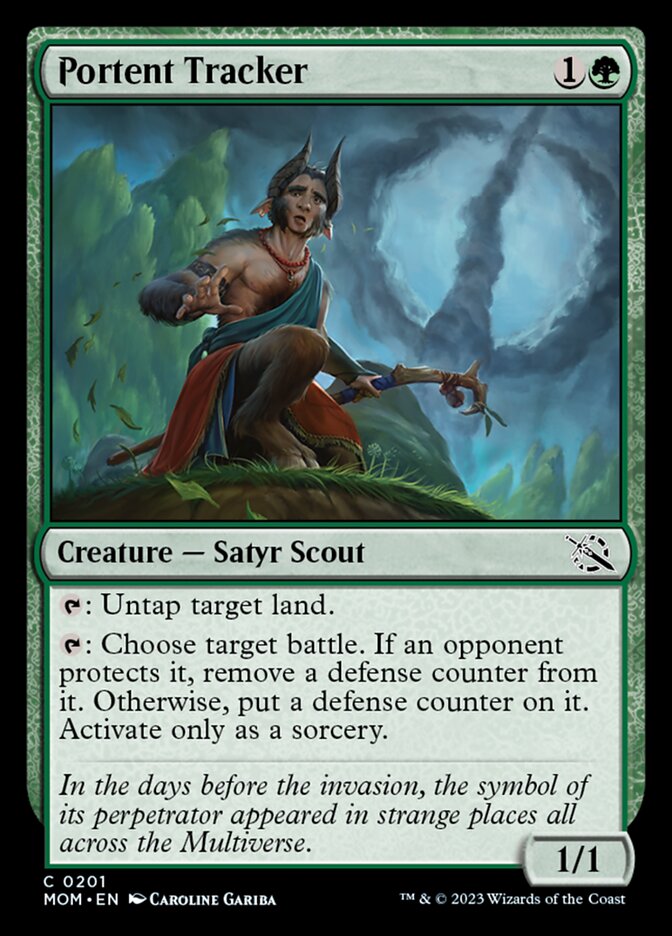
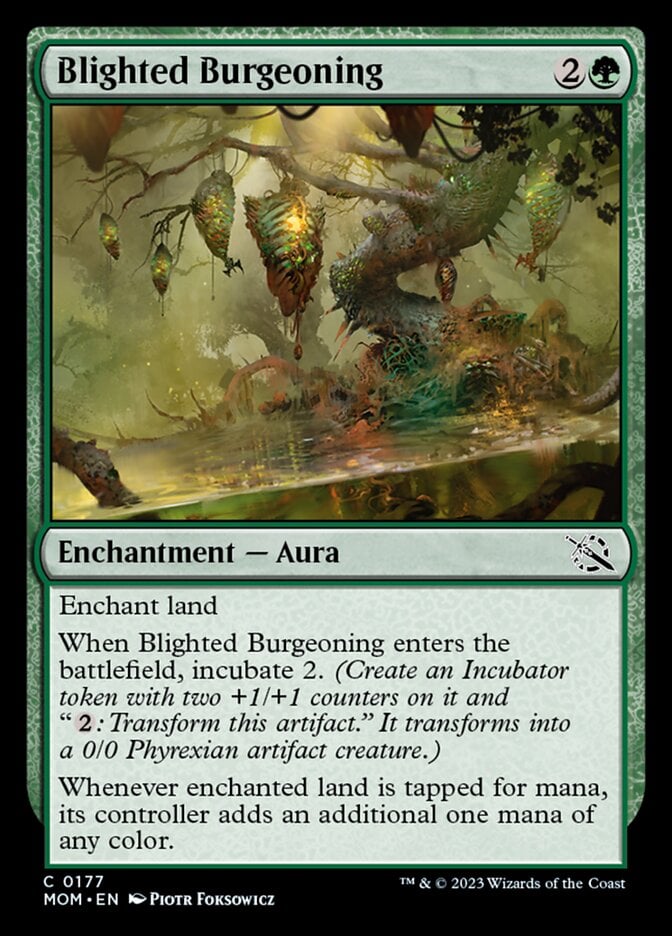

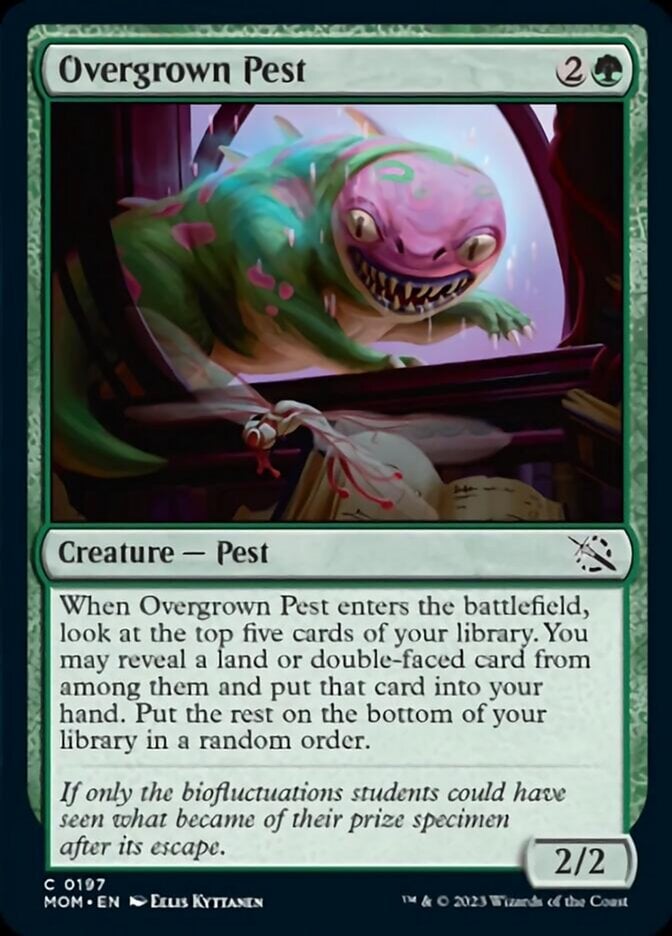
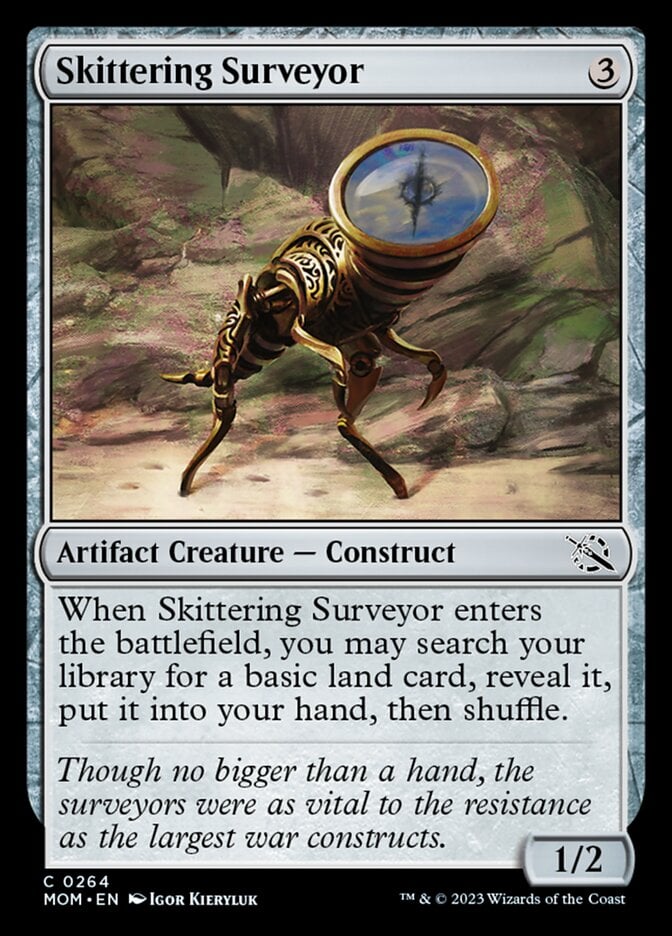
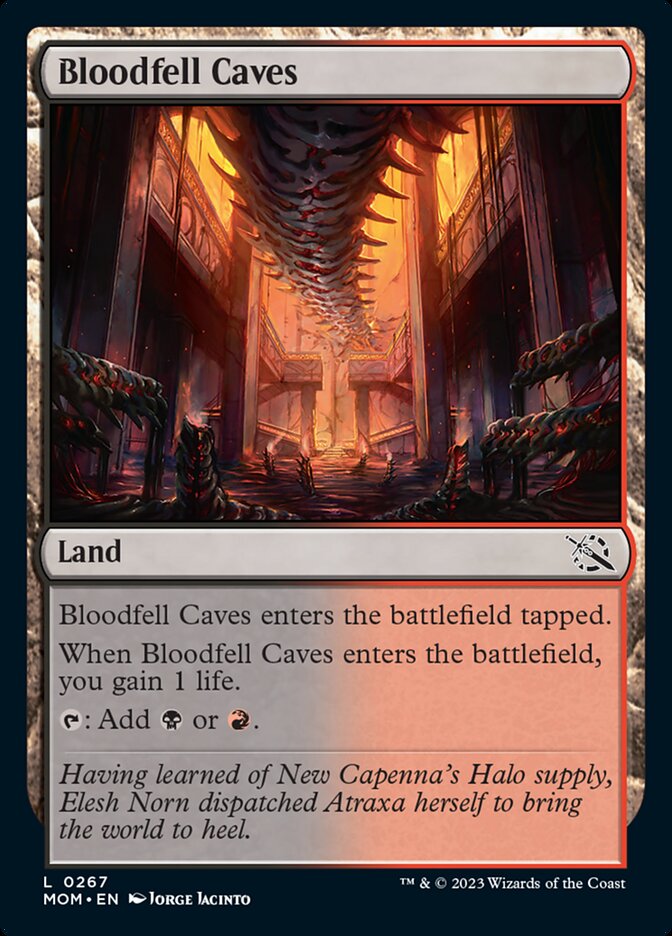

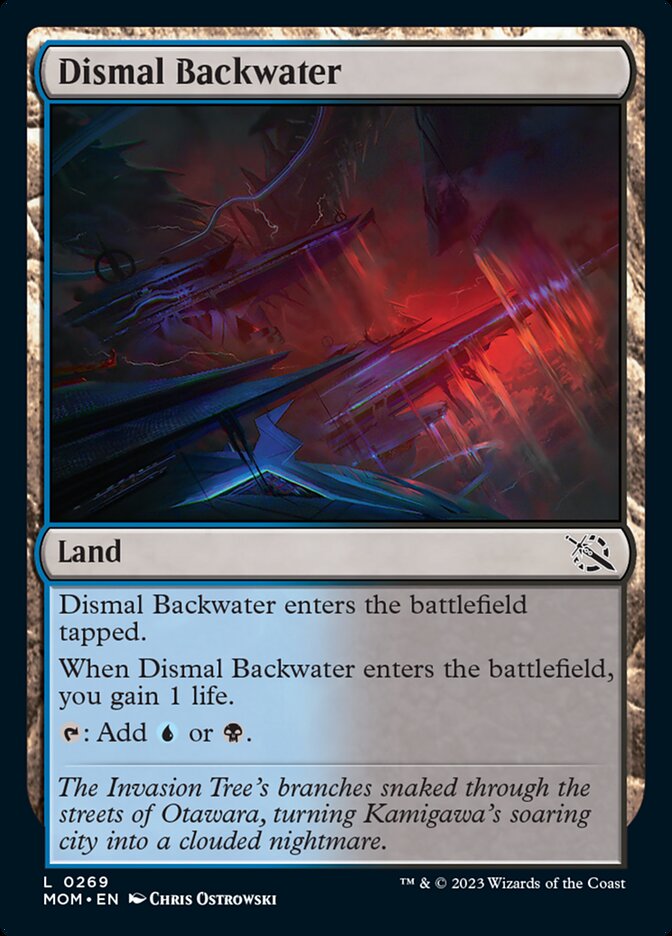
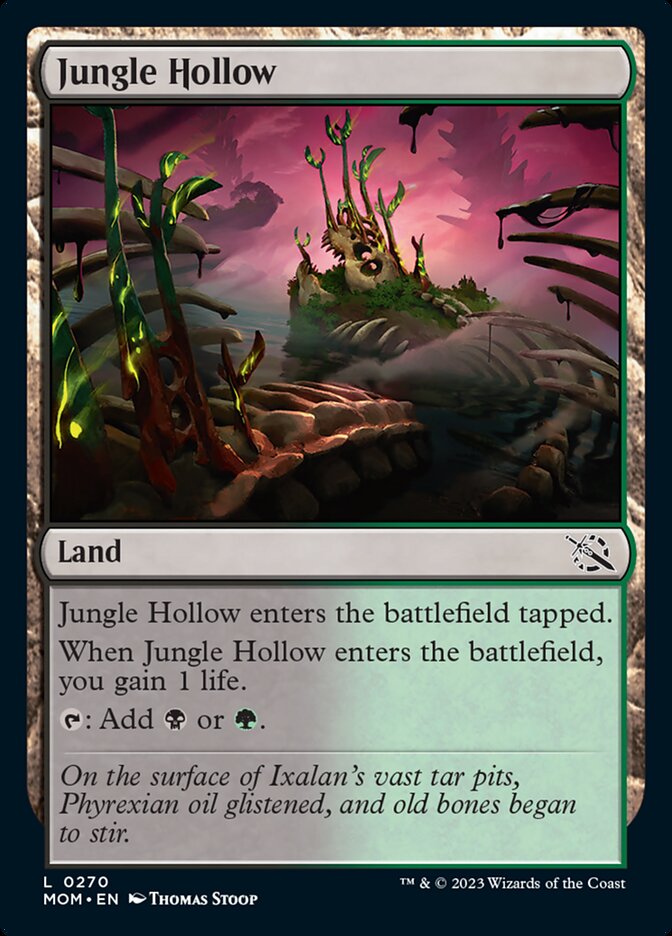

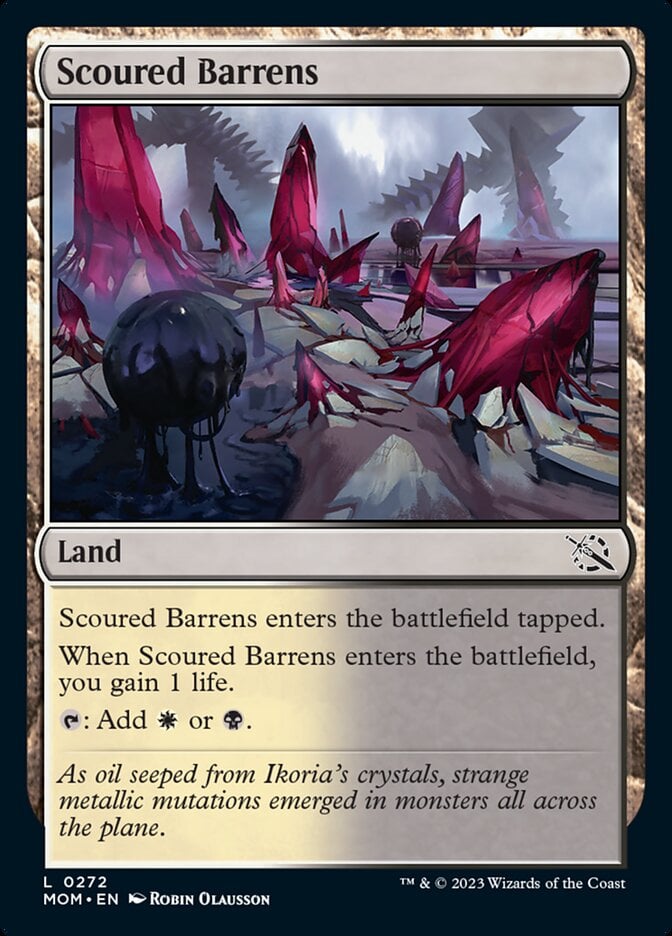
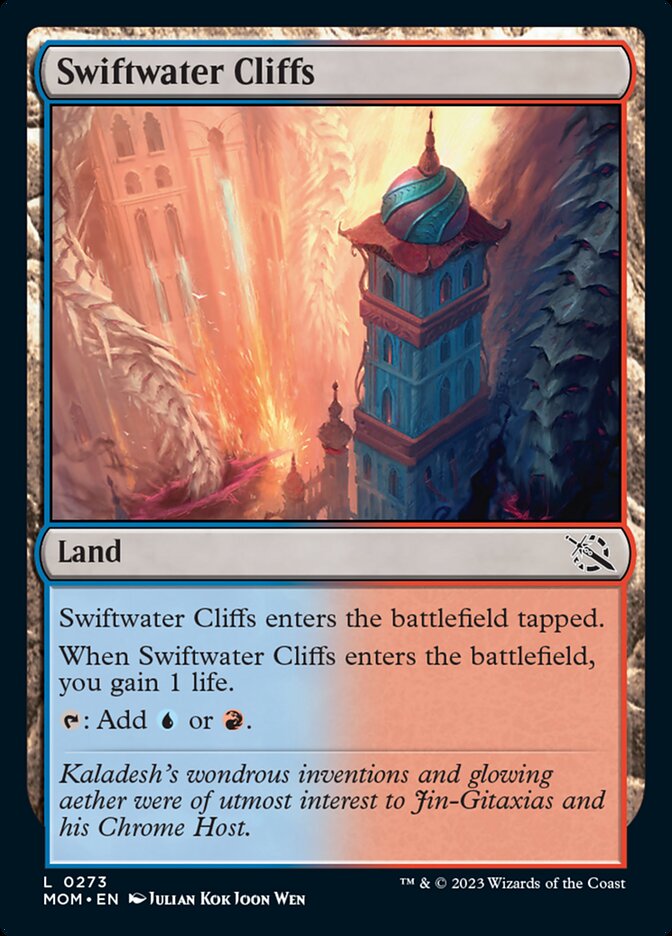

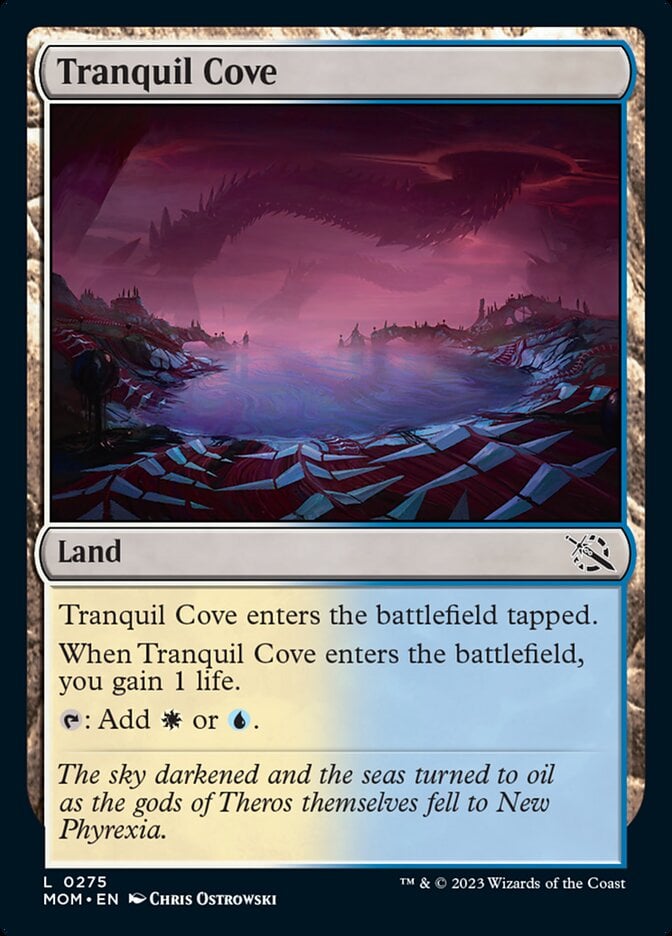
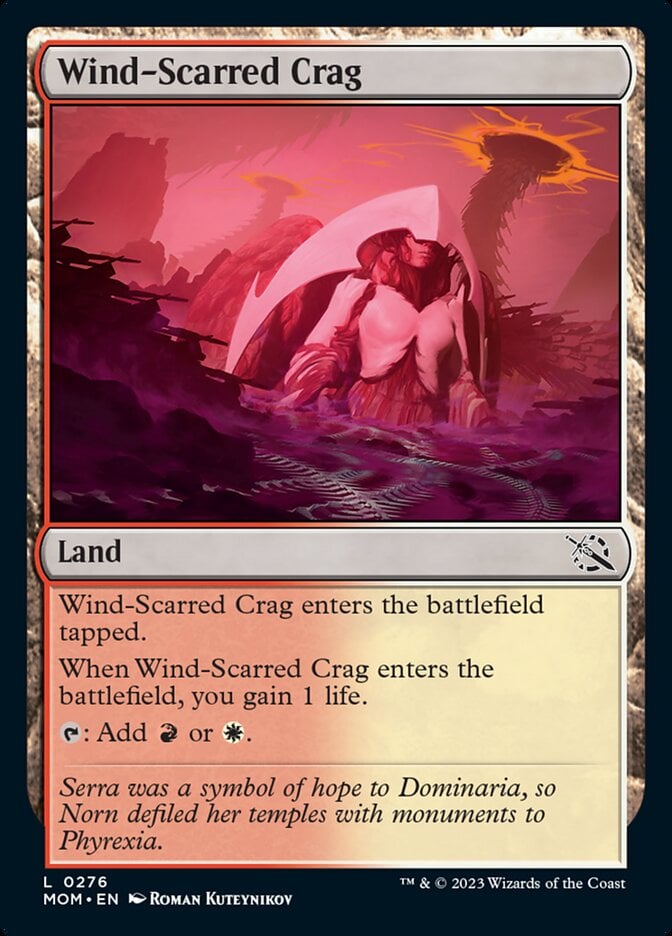
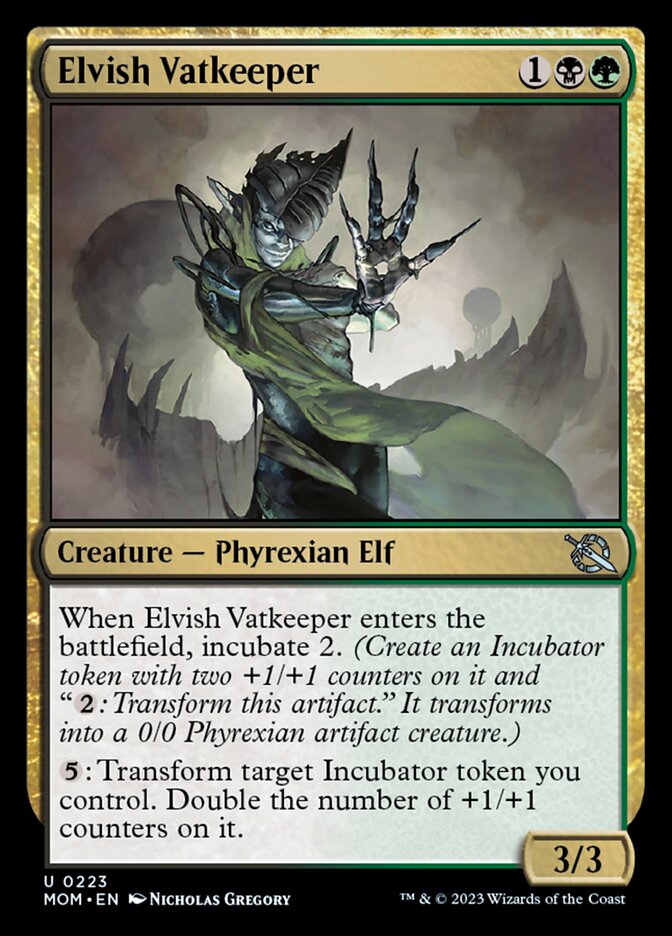
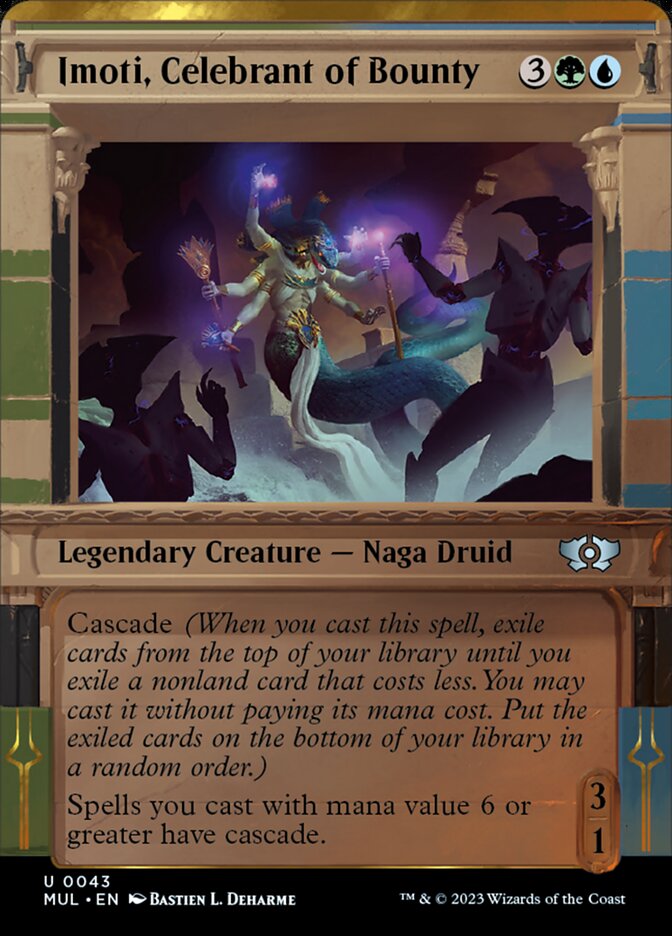
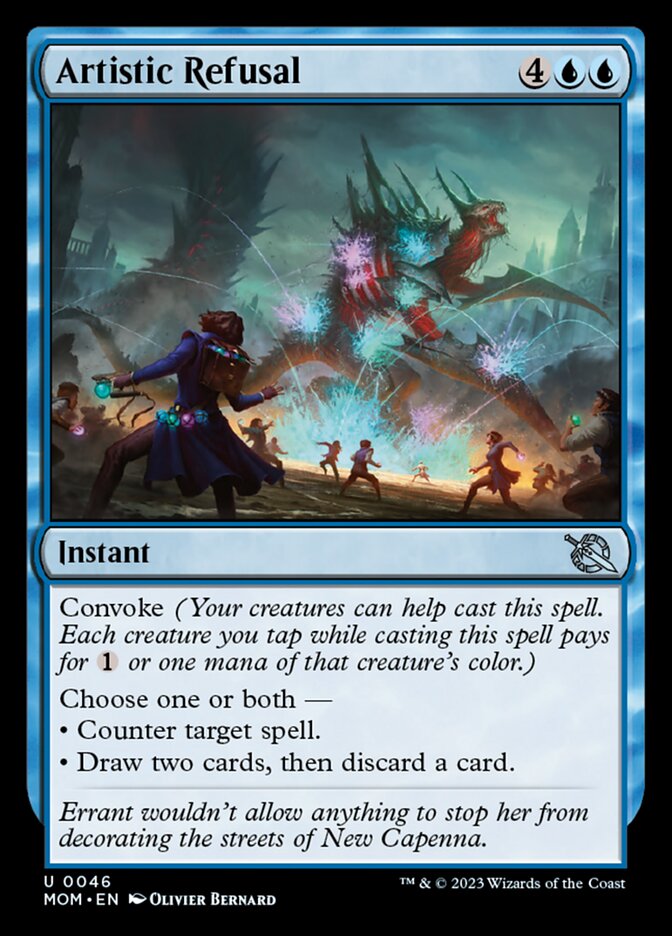
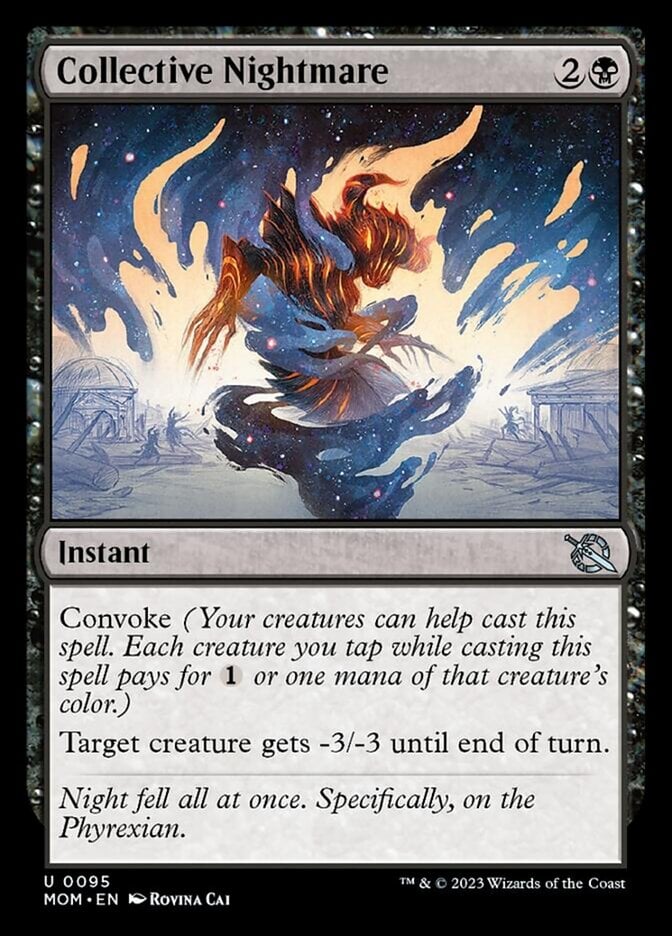
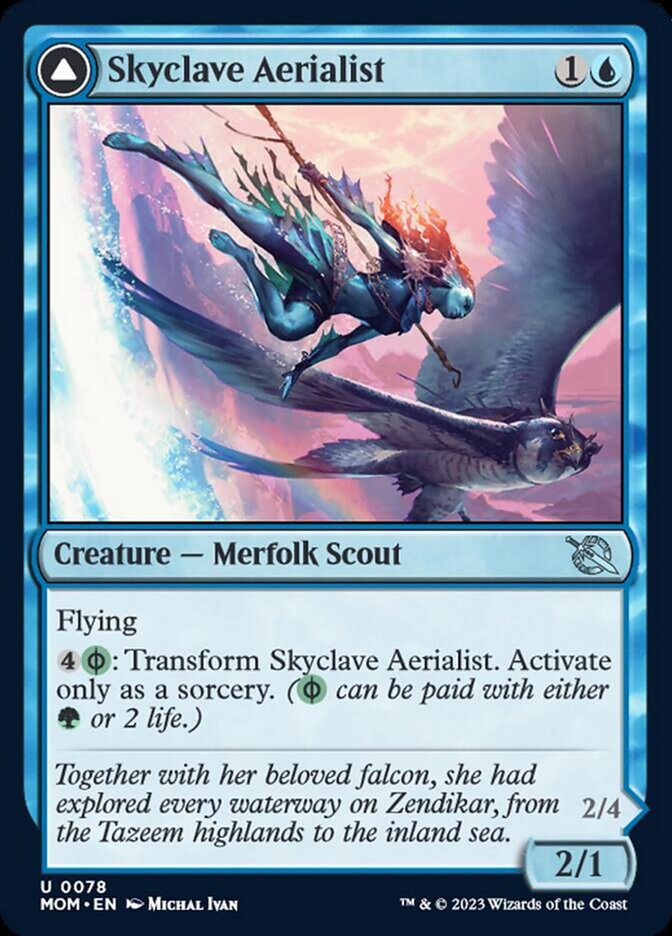
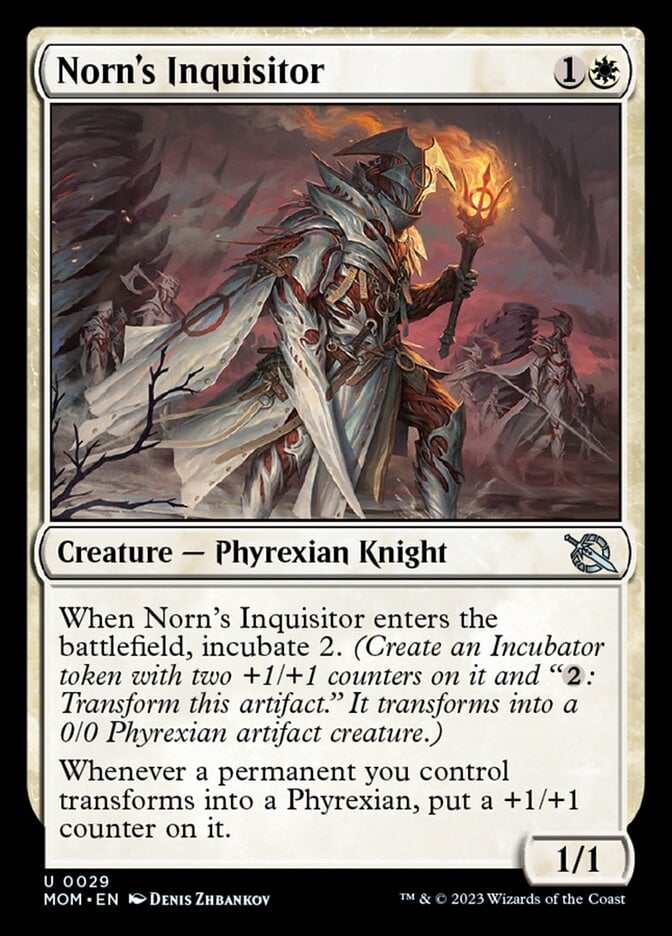
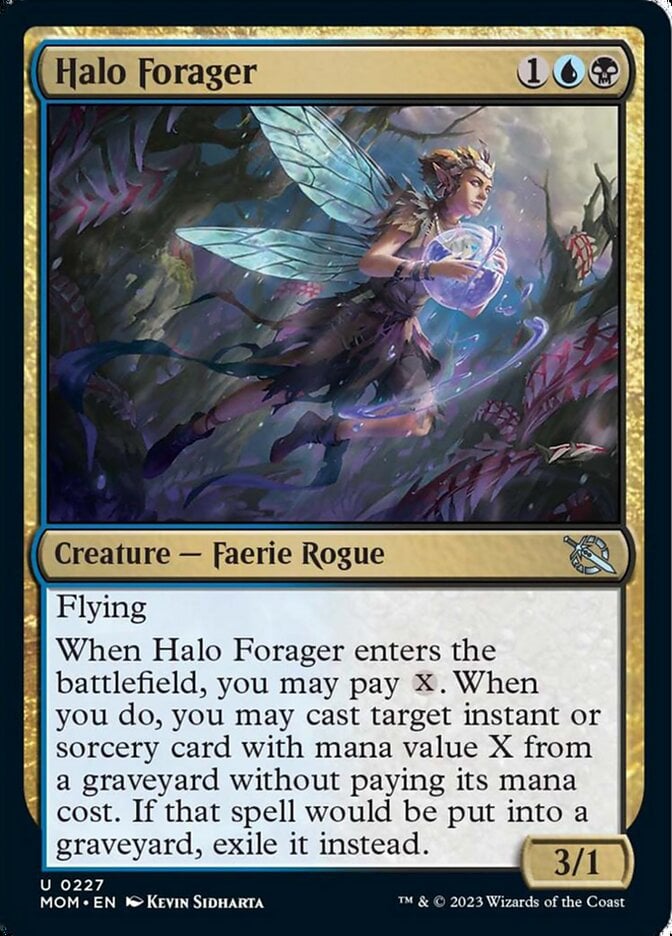
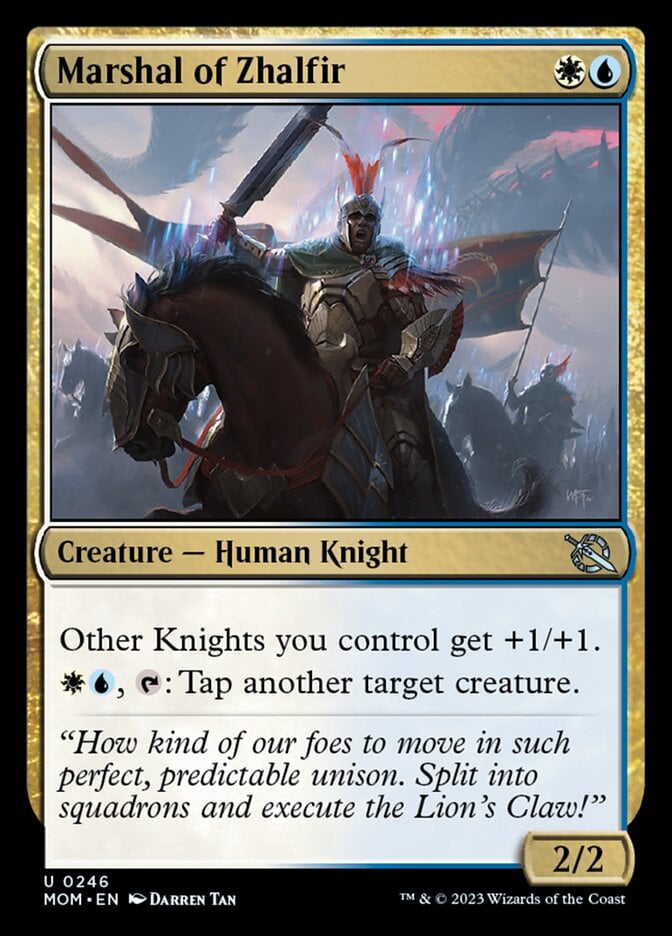
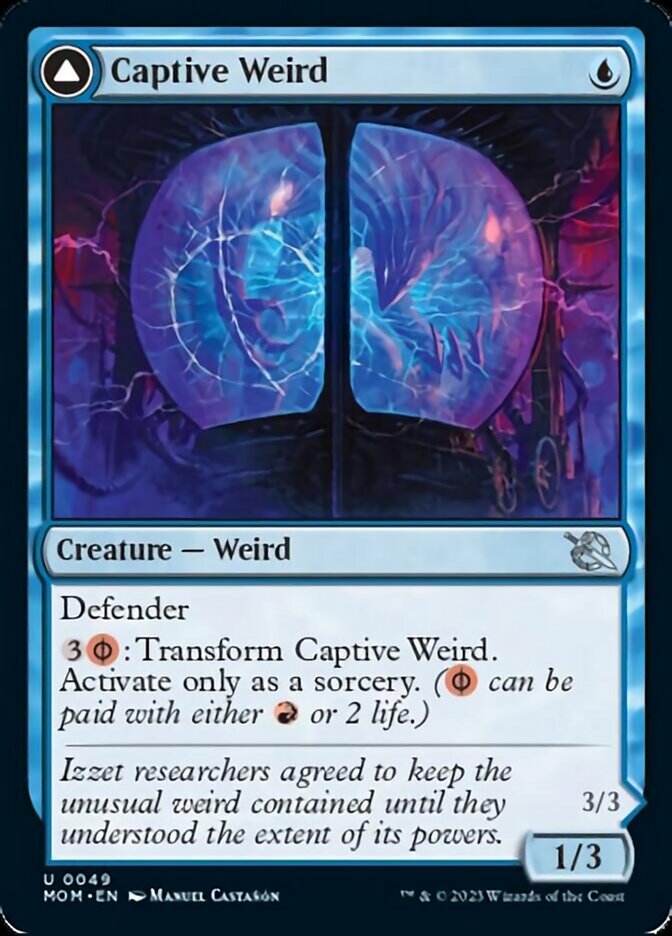
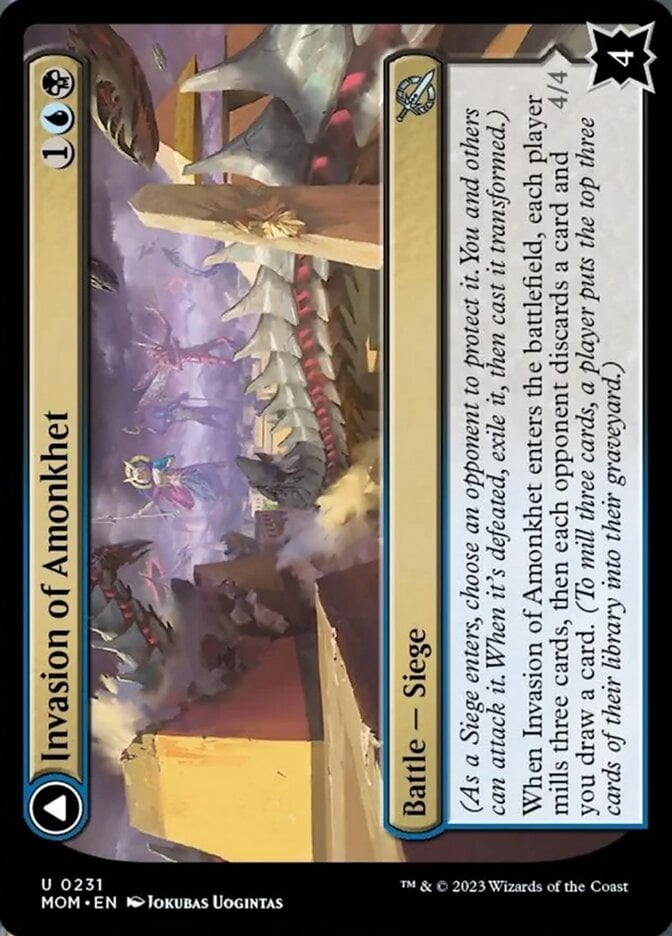


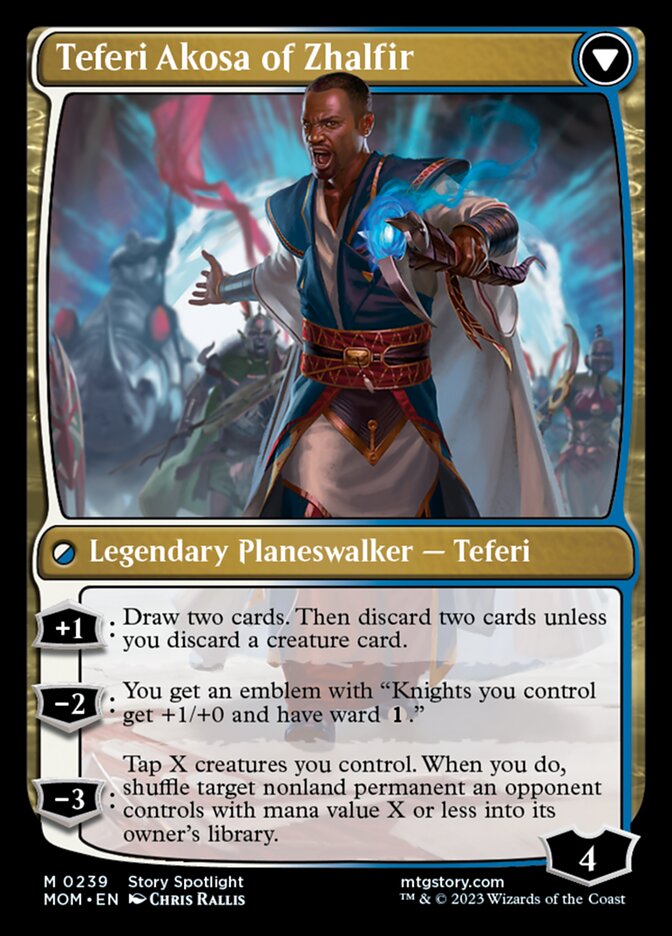
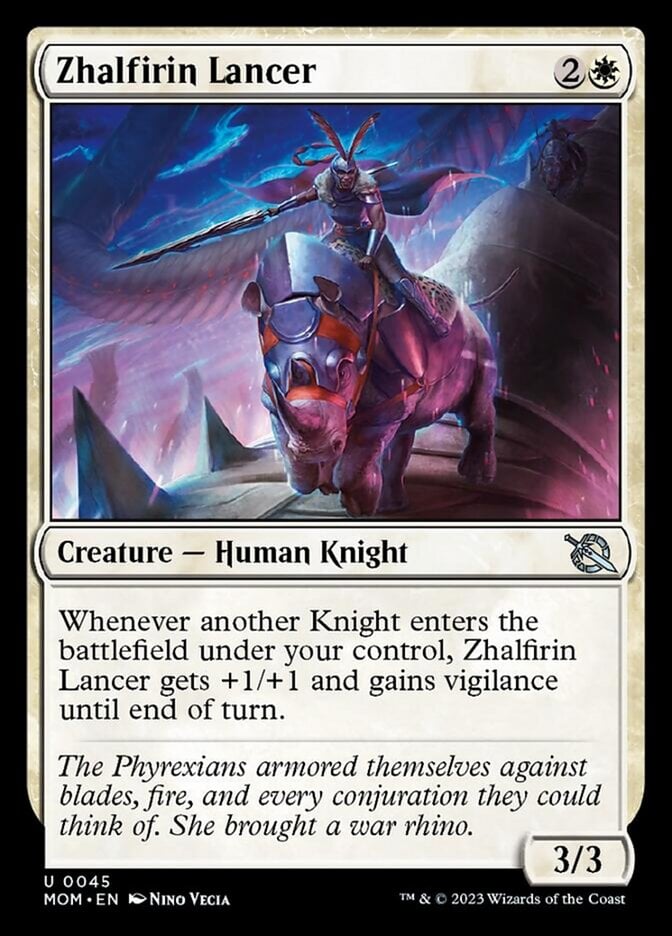
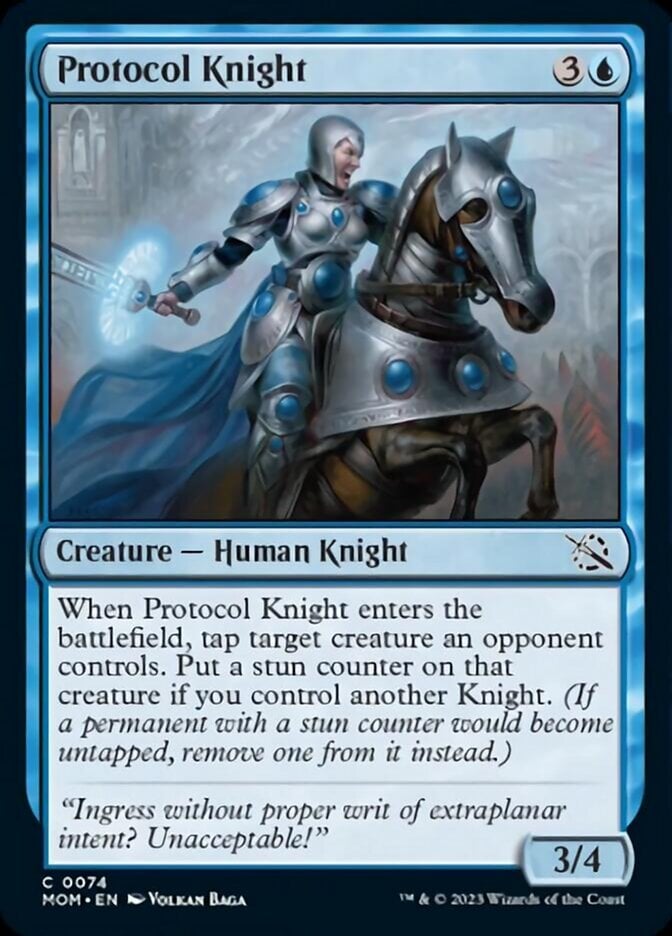
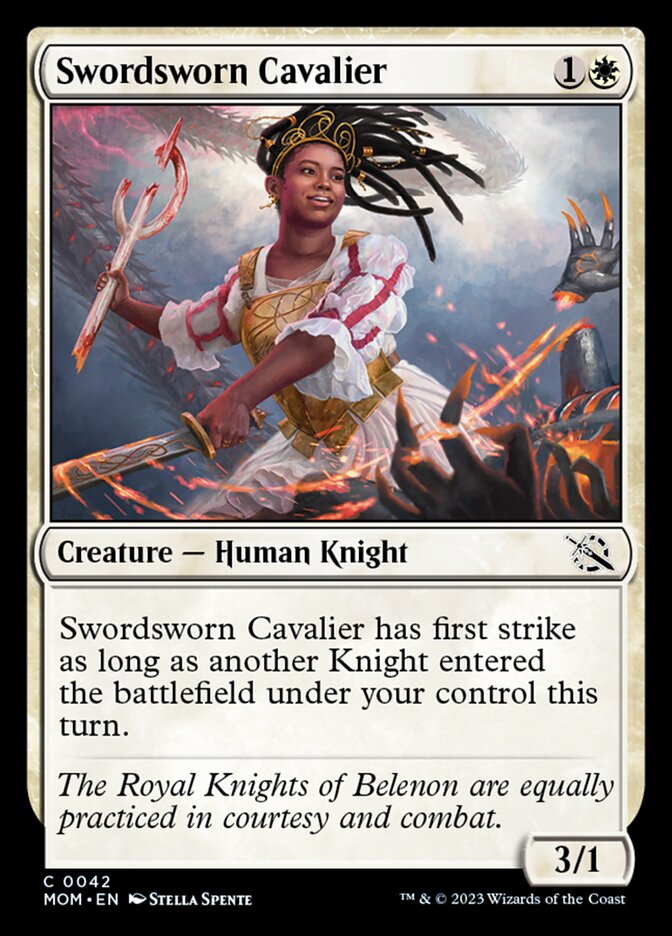



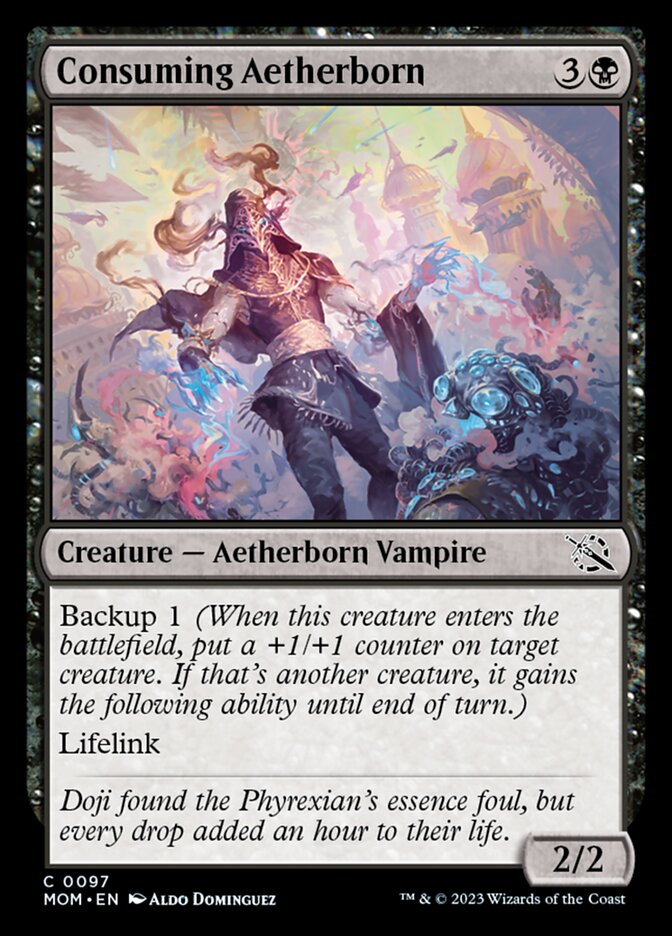
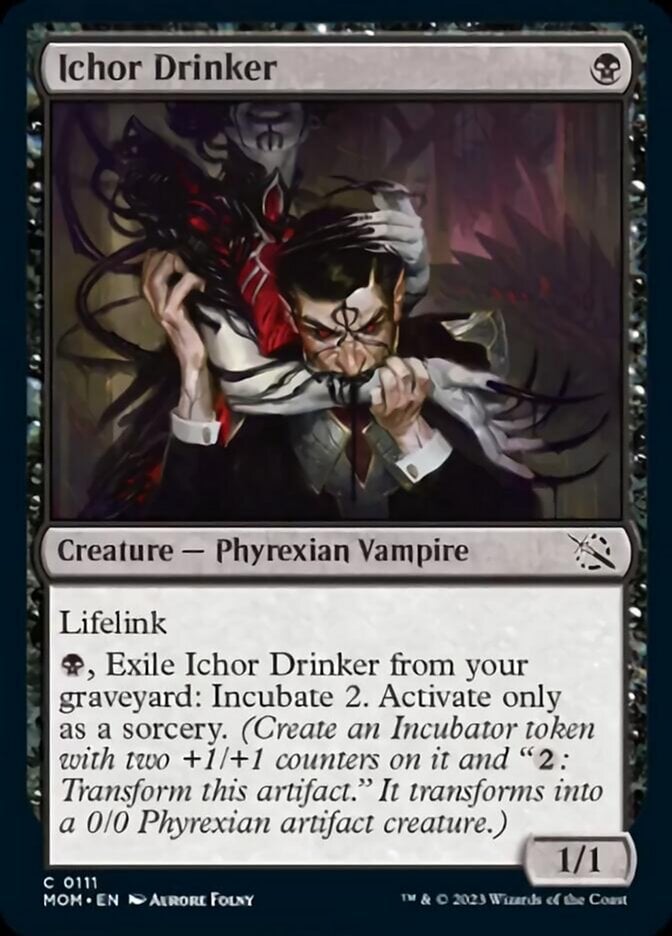

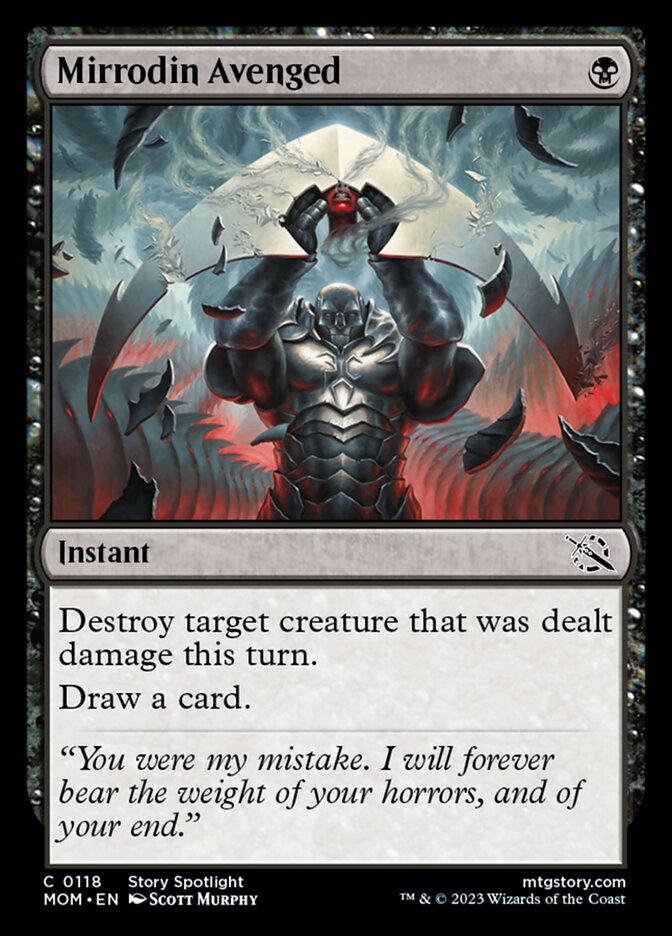


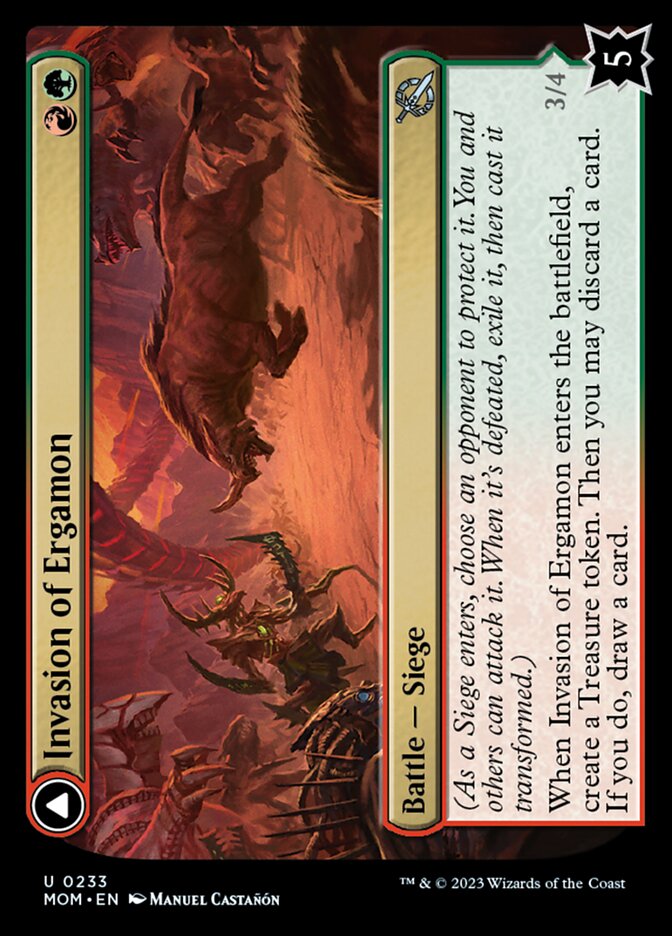

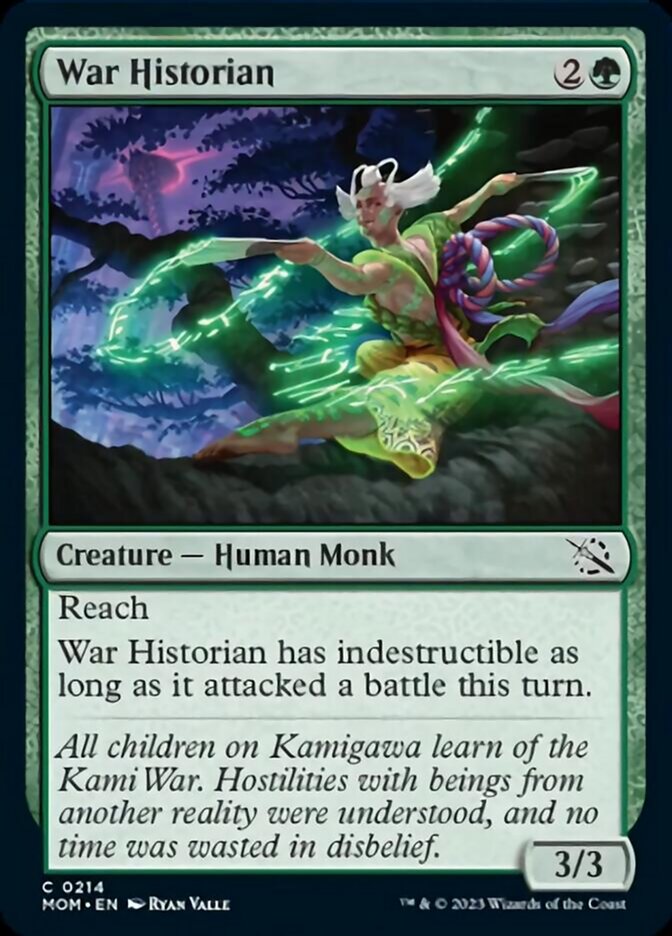
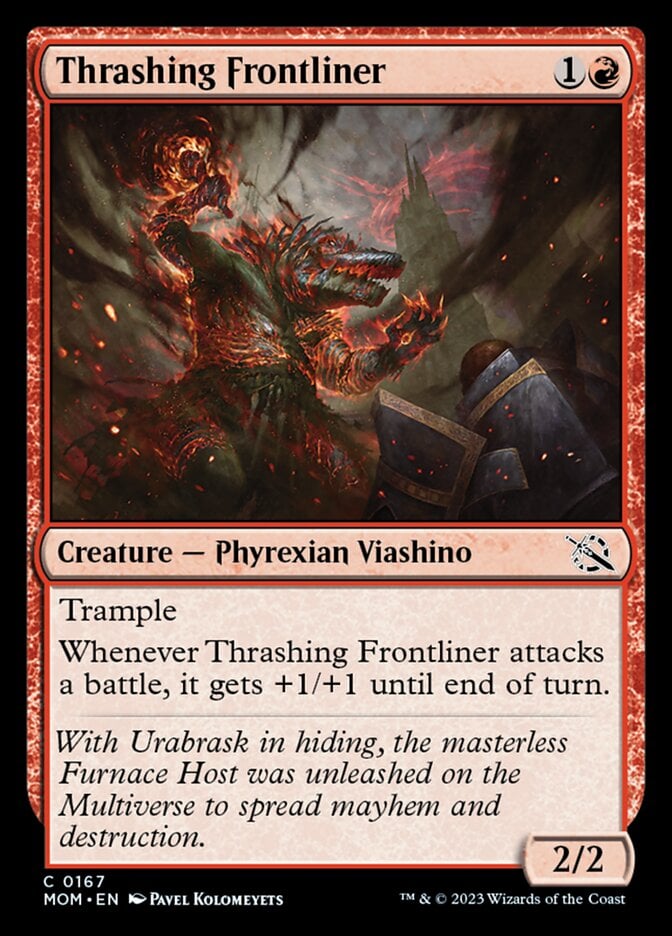
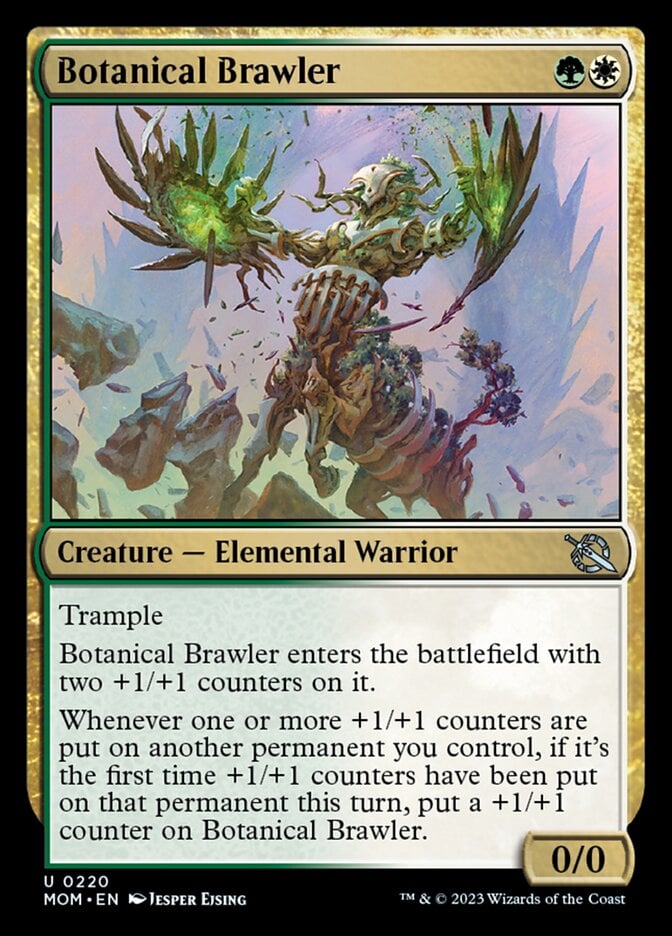
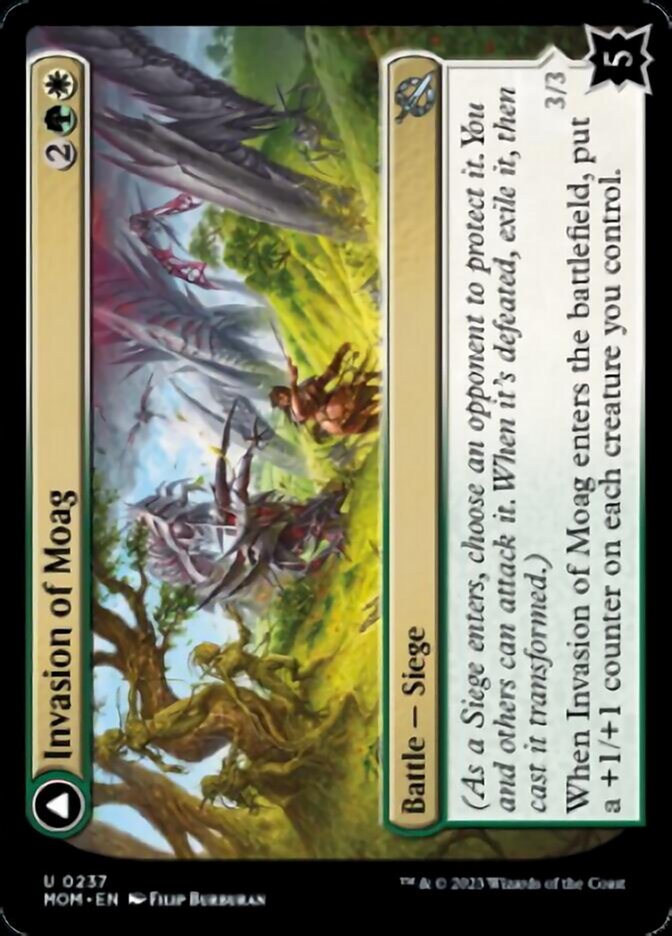

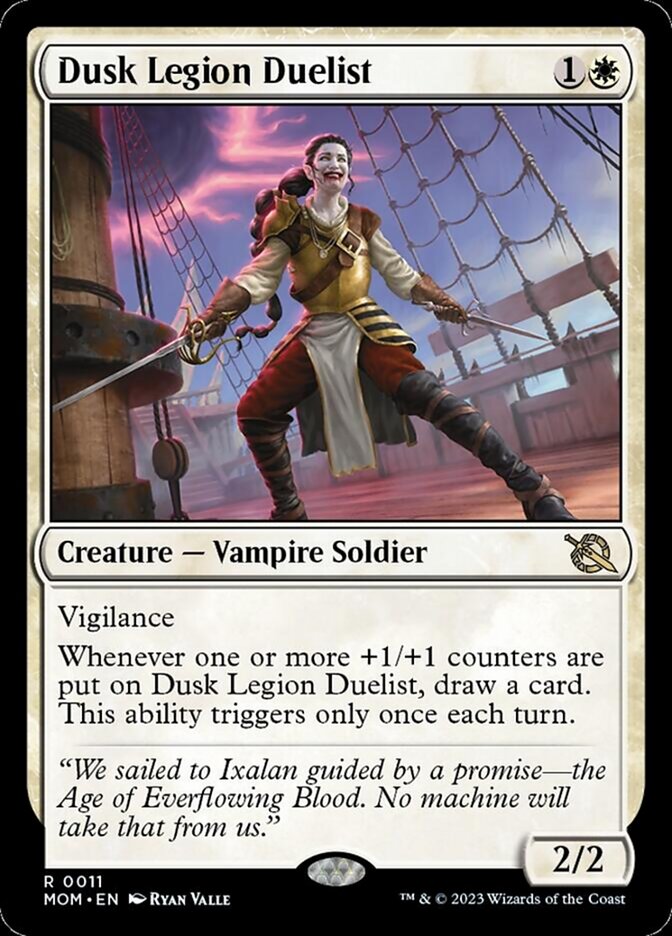
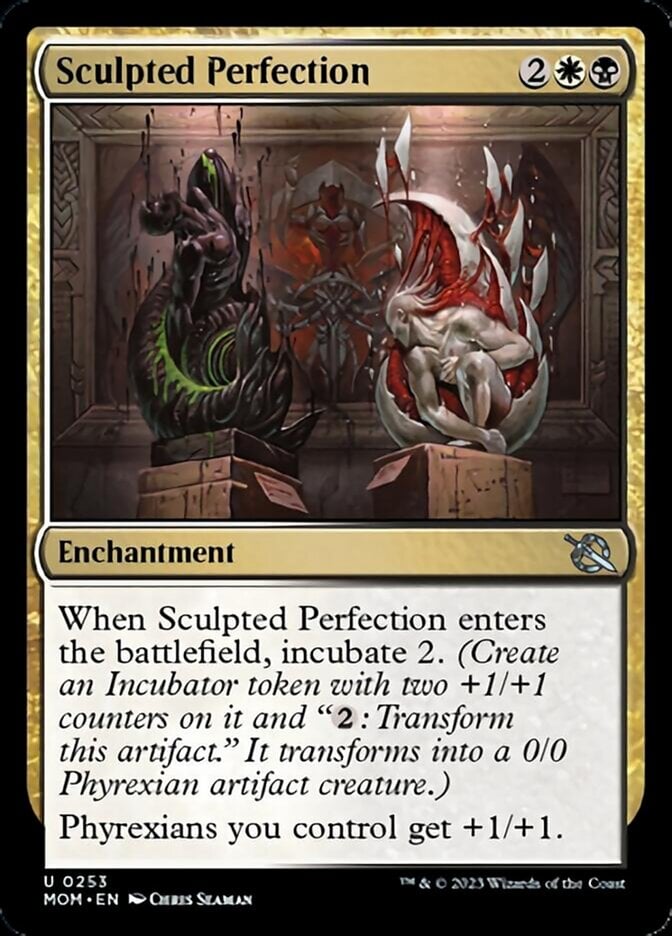
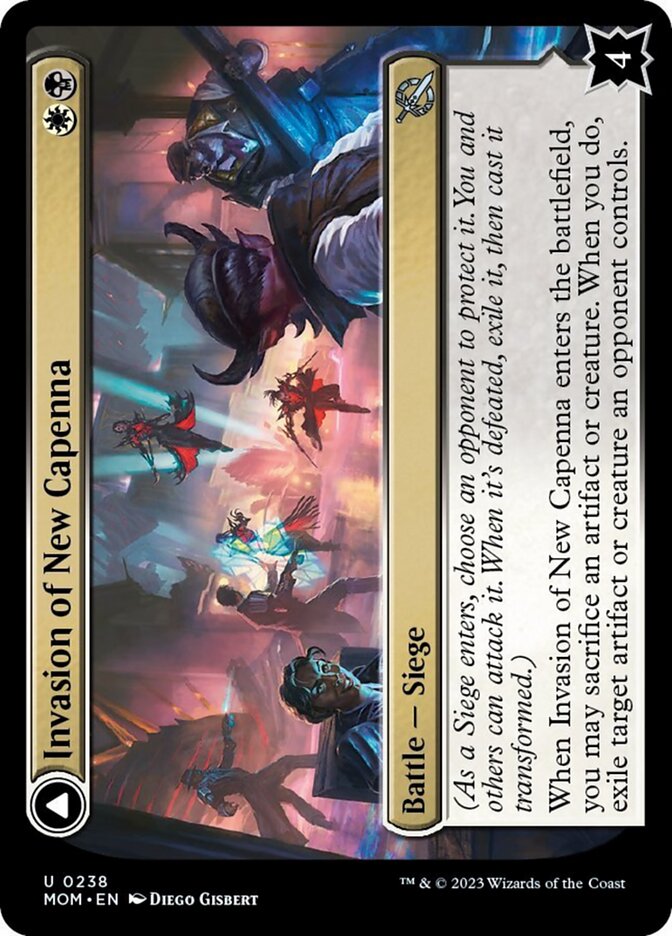

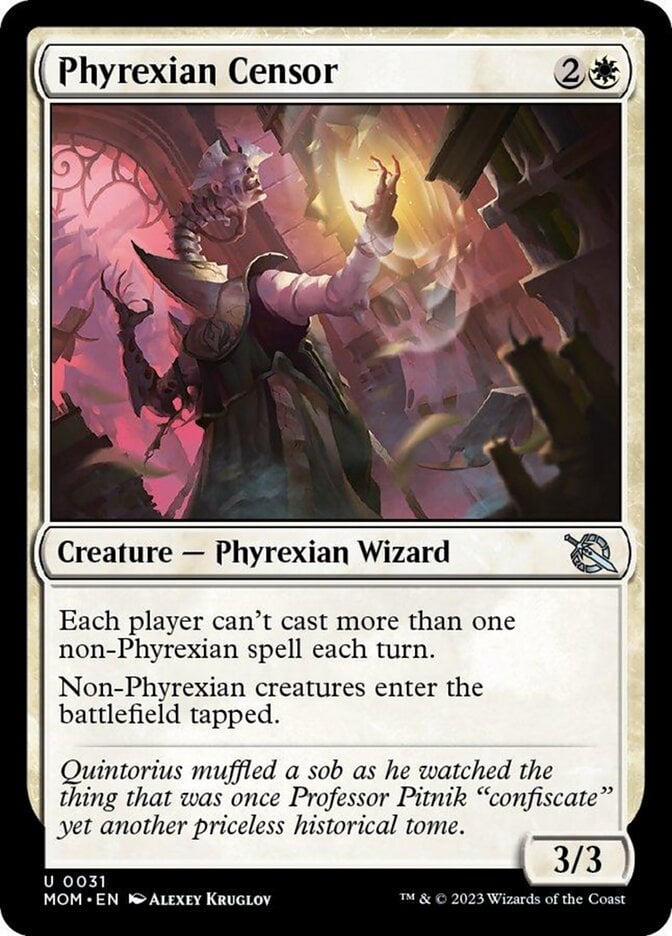
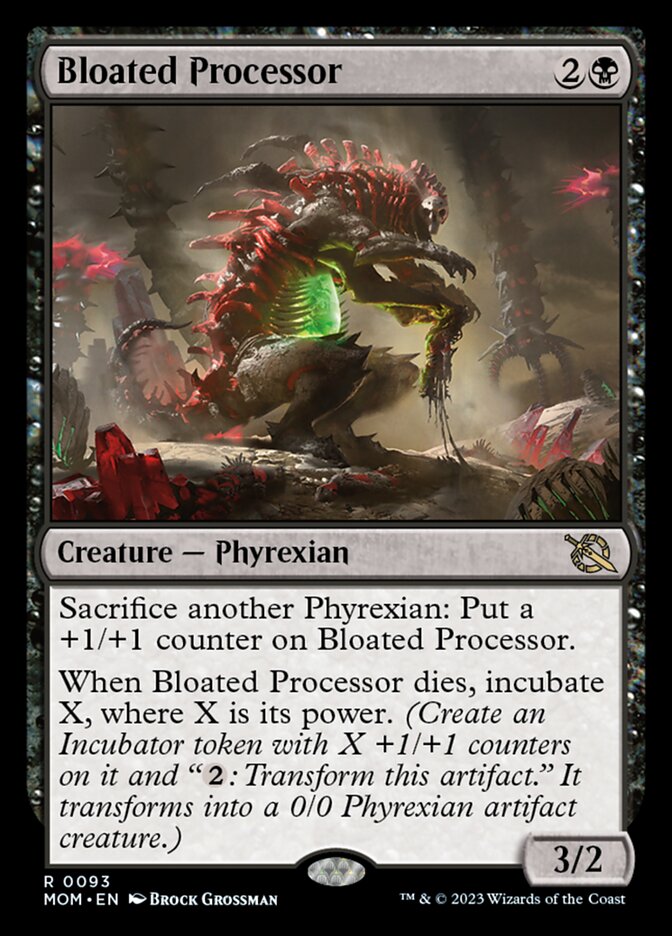
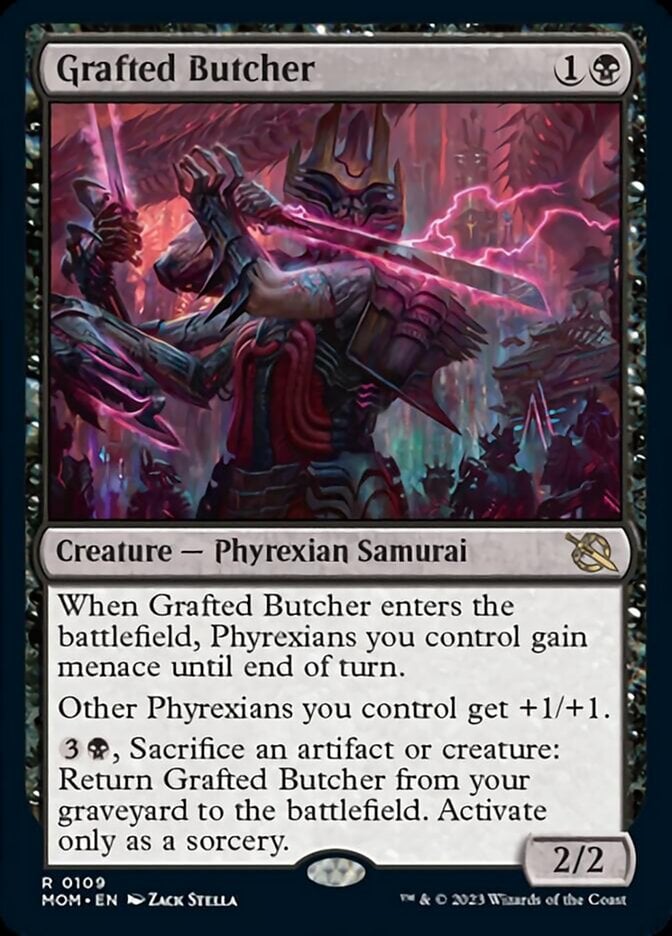
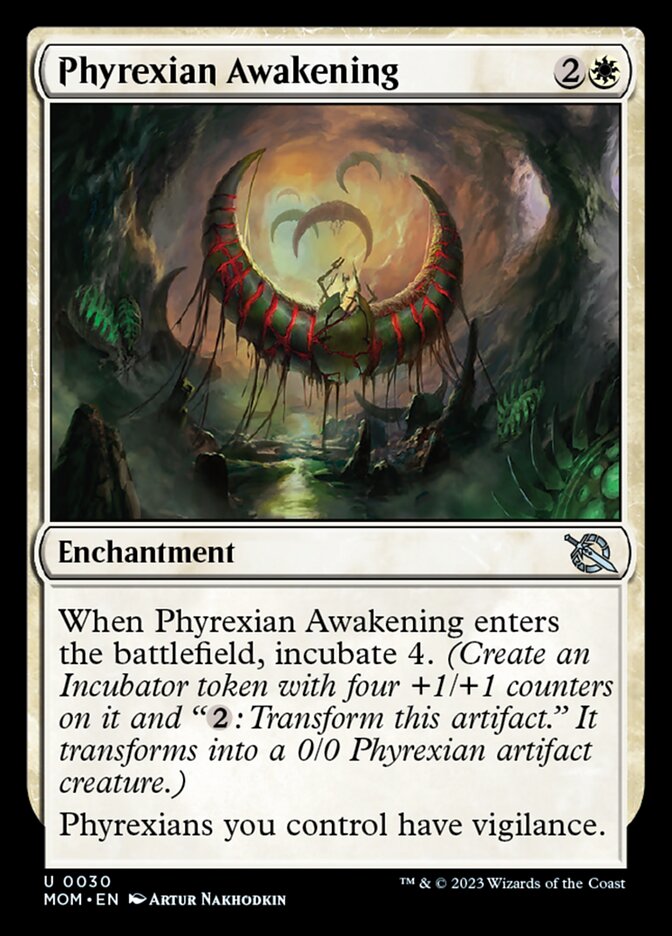
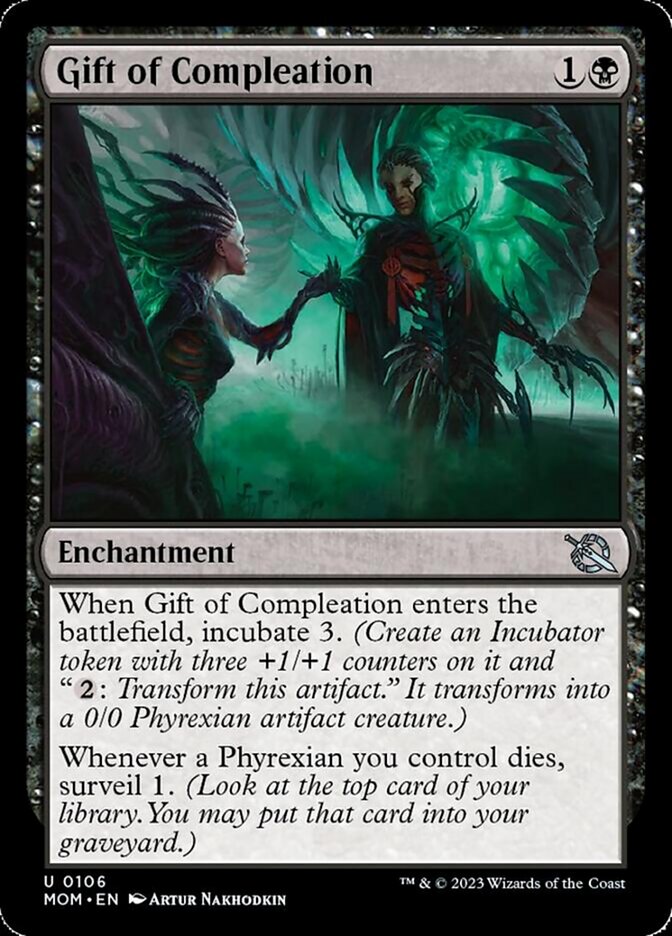

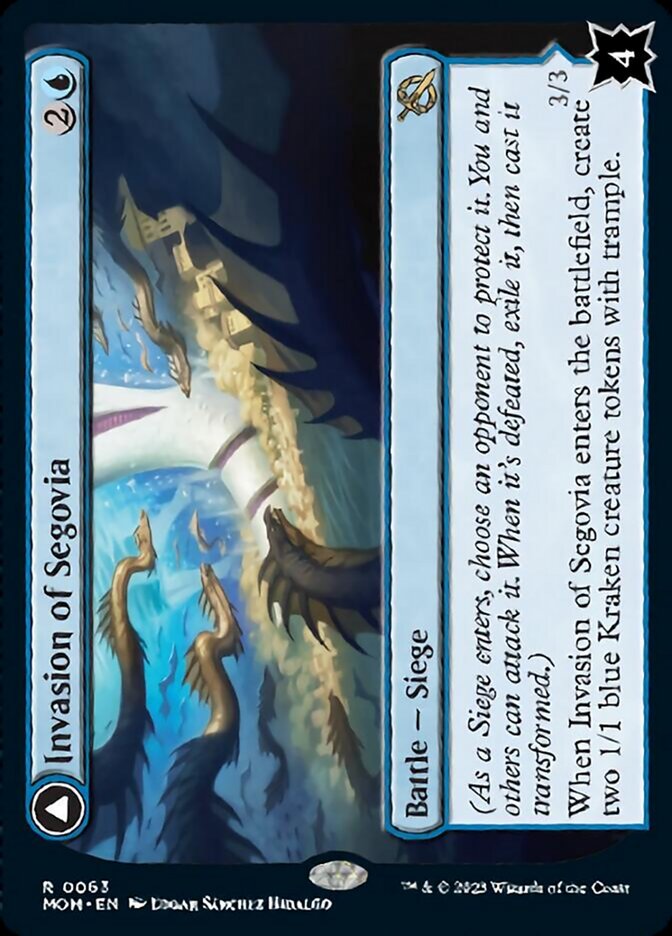

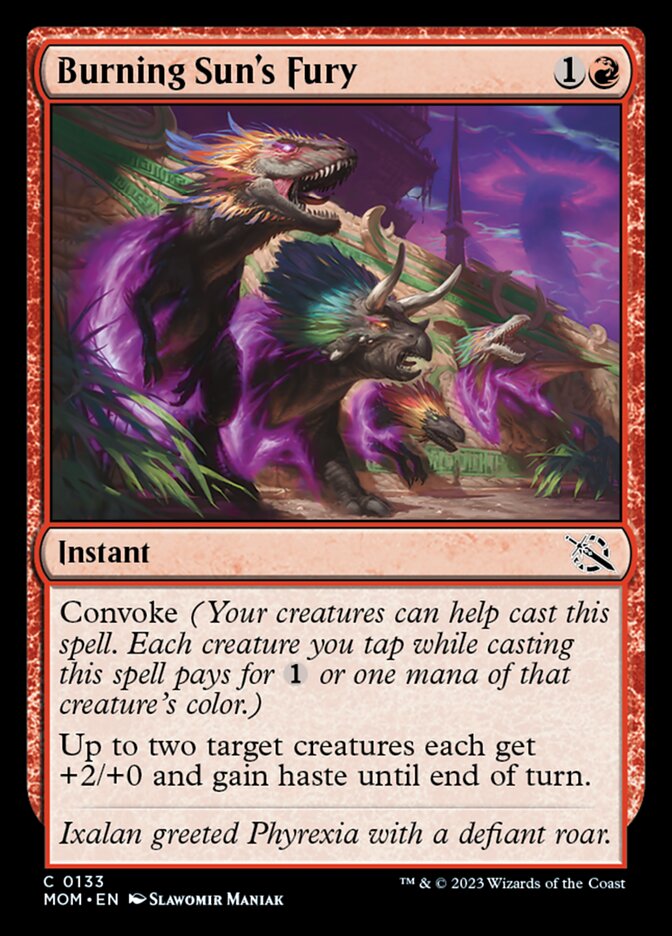

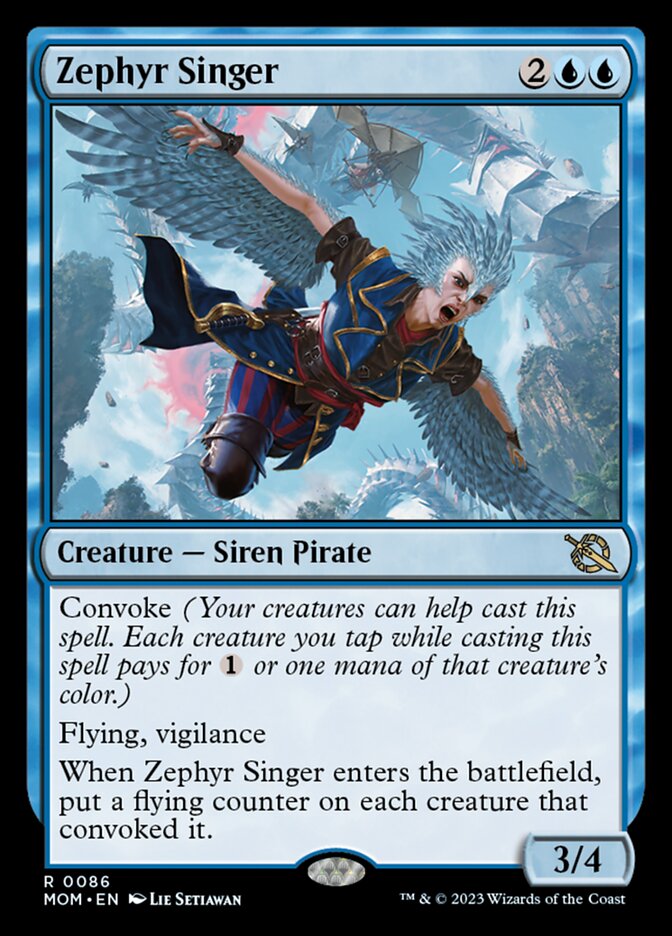
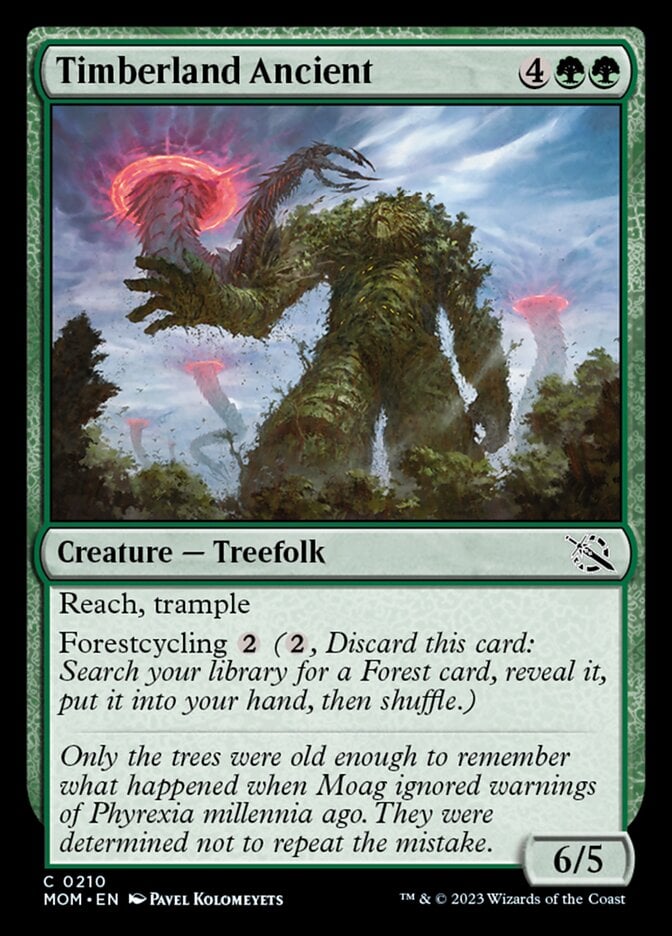
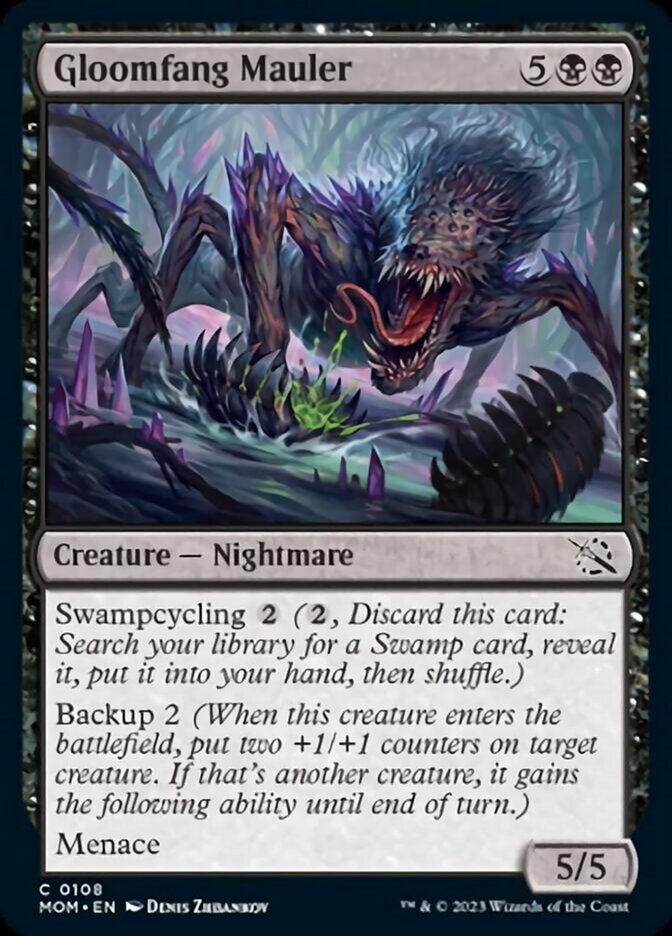
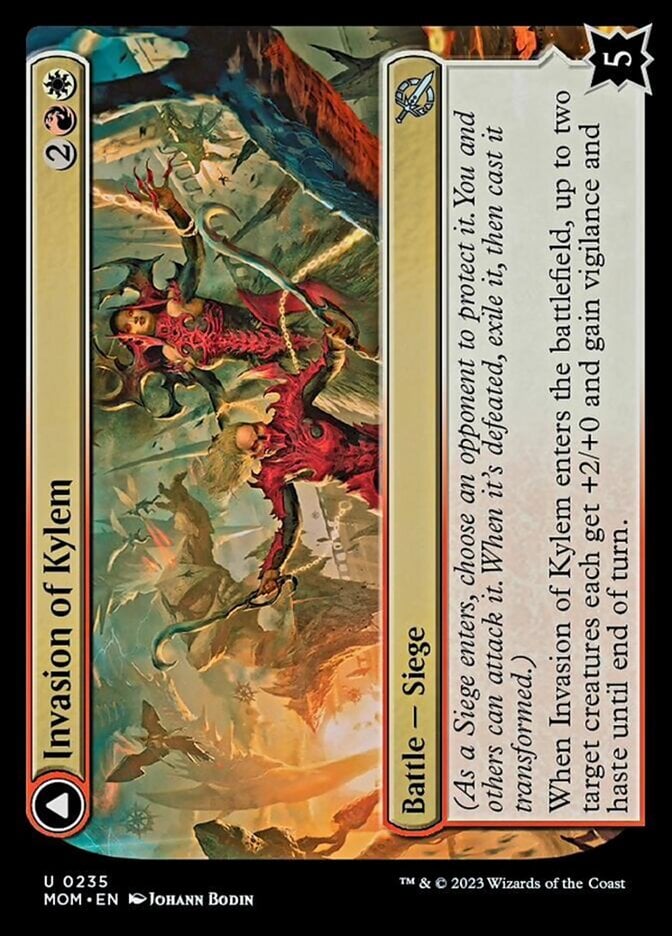

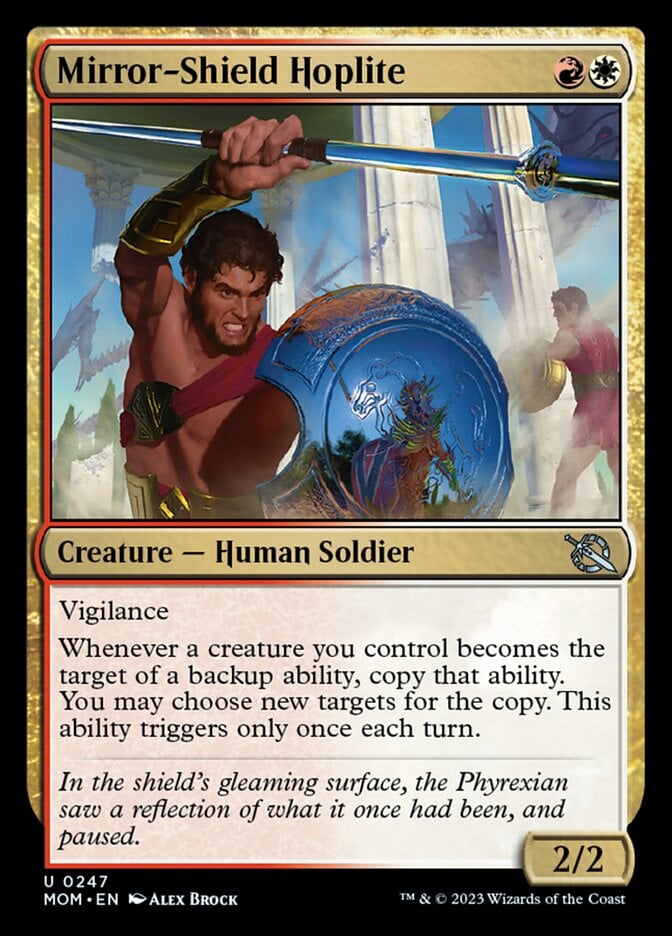
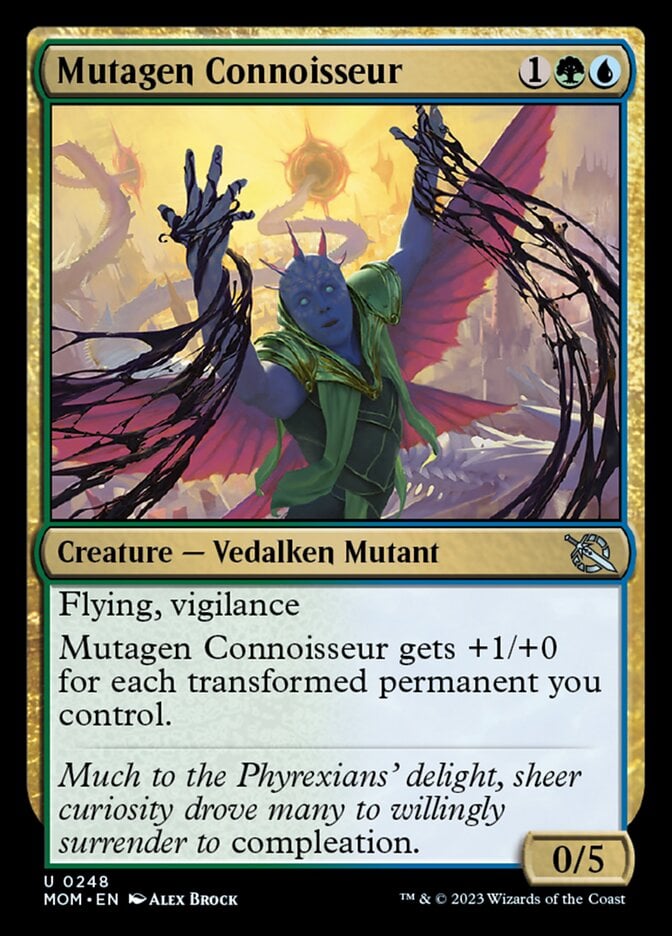
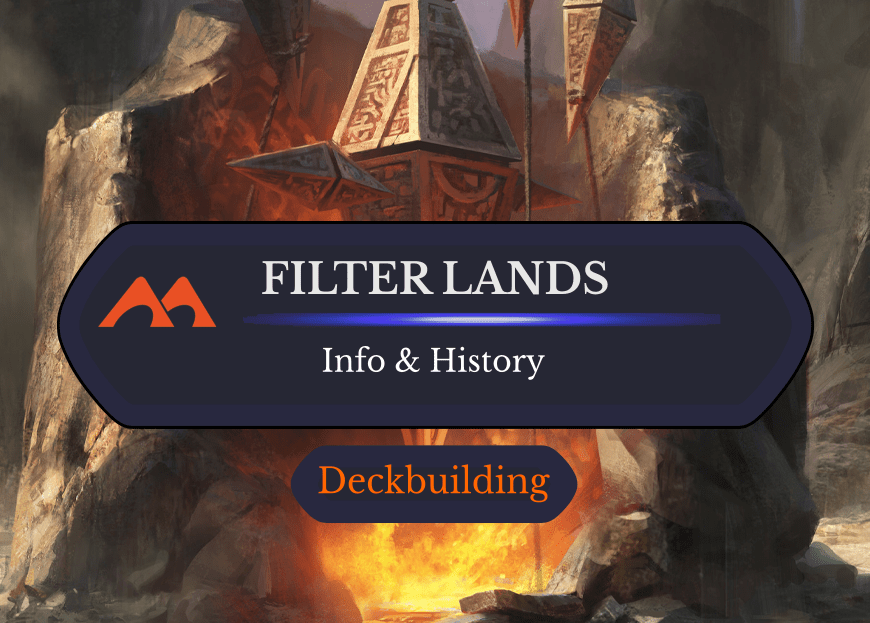
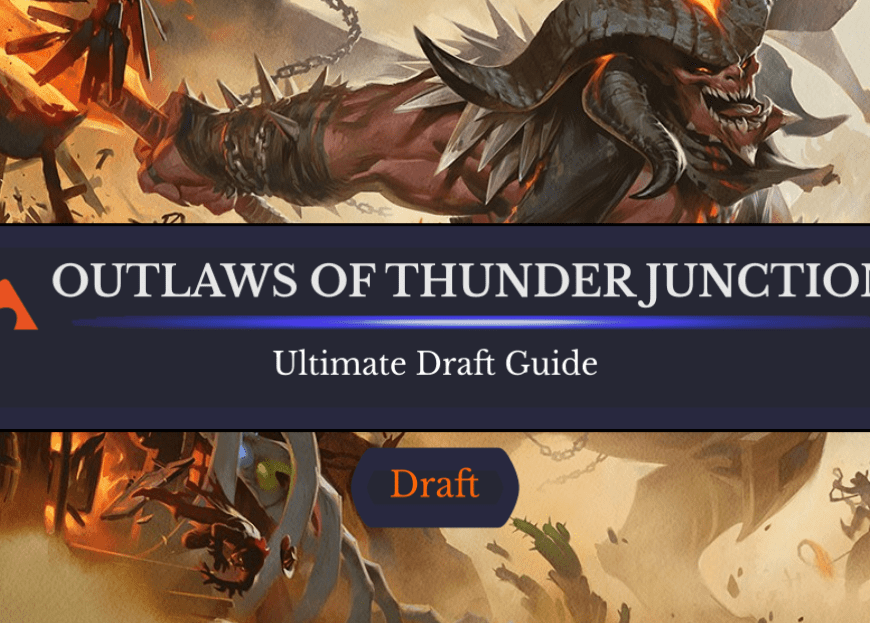
Add Comment